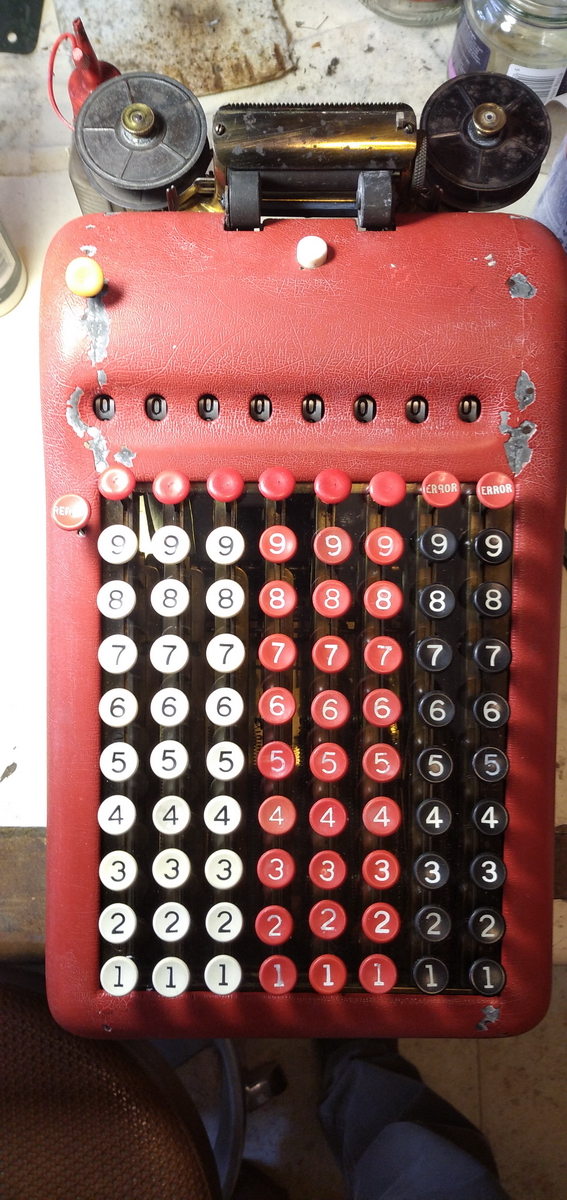Frank D. Laughlin & Benjamin P. Hayes prototype for "The New Automatic"
This machine was a commission to calcusaurus by the Arithmeum, and it is the same machine as found by Thomas Russo in the abandoned factory of the Automatic Bookkeeping Register Company in Kansas City, Missouri. Frank D. Laughlin was the owner and director. This is him:
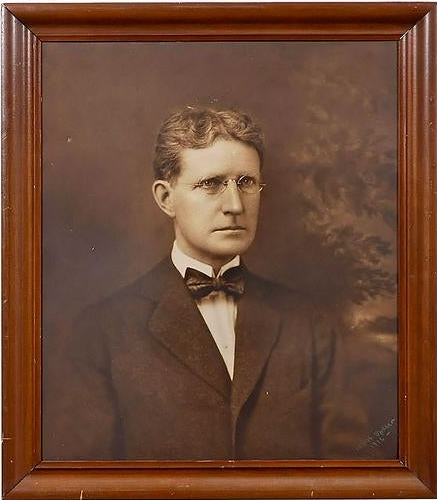
T. Russo has labeled it as a prototype or patent model. It is a little worse for wear, having stood around in the abandoned factory building from 1923 to 1997, when it was auctioned off to him.
There are advertisements for "The New Automatic" which pretty much show this machine, complete with glass sides, but with an adapted printing mechanism, and in the patent and other advertisements, the totalizer has moved to the front of the machine.
The first and most important question was whether the machine (which was completely blocked) would actually work. That necessitated some cleaning. This is the machine as it arrived here:
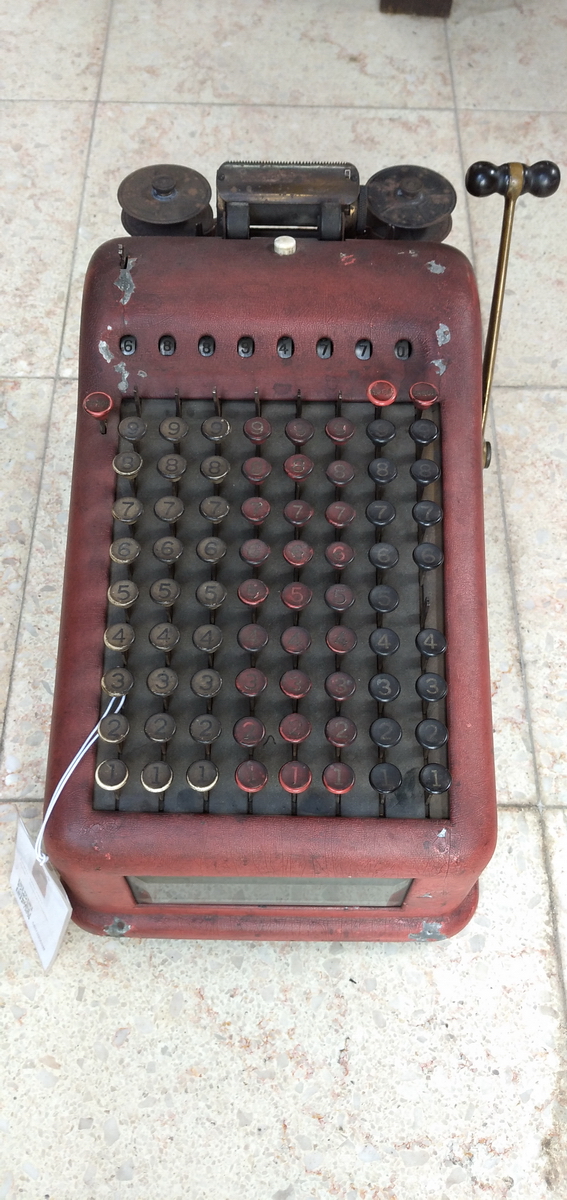
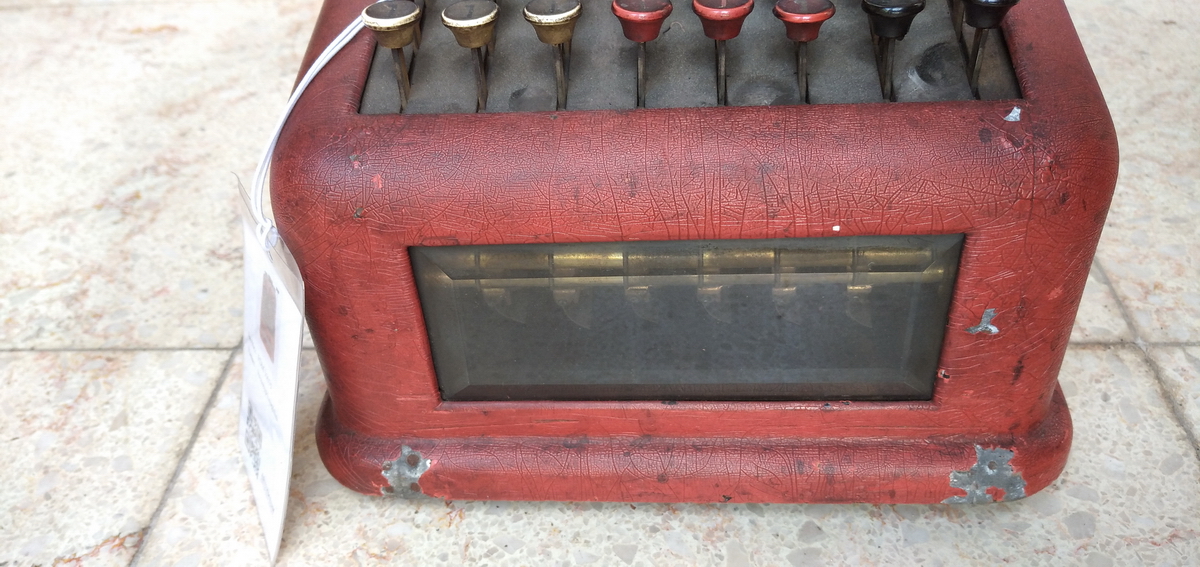
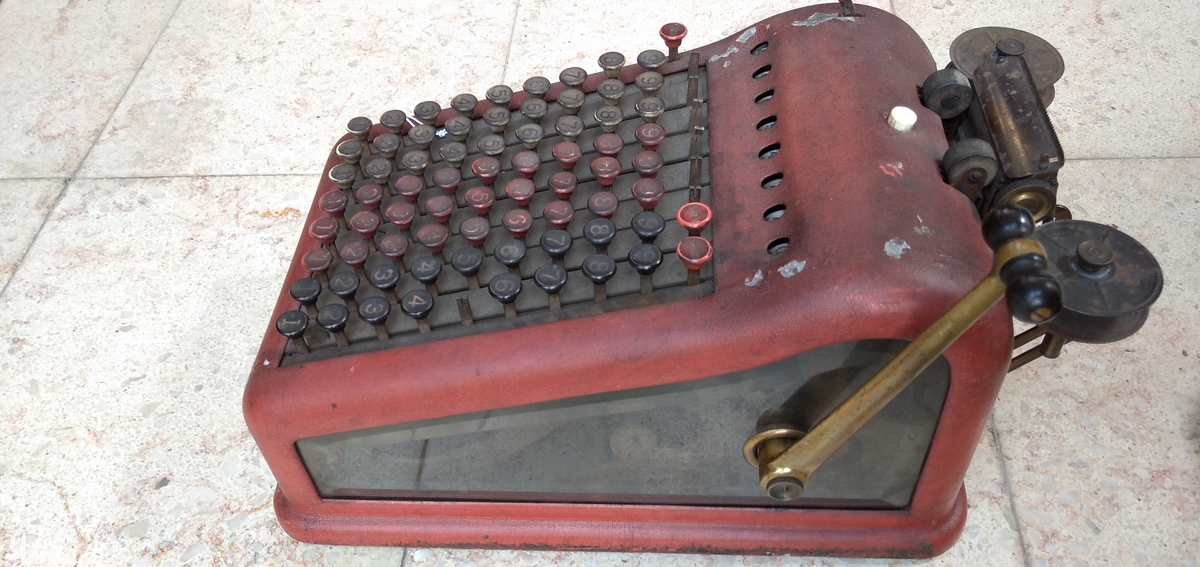
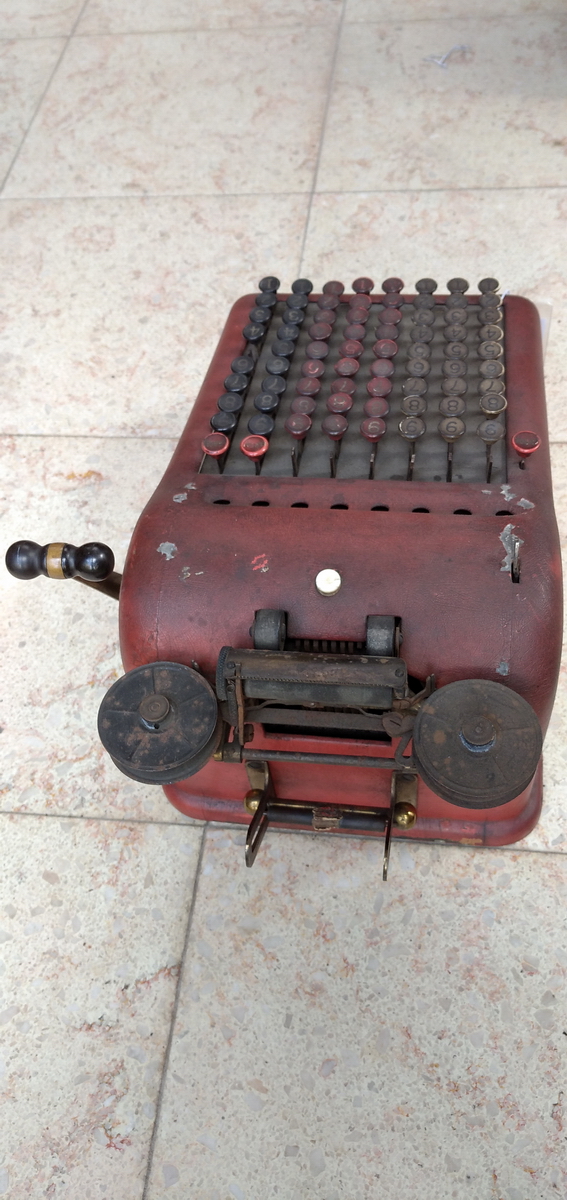
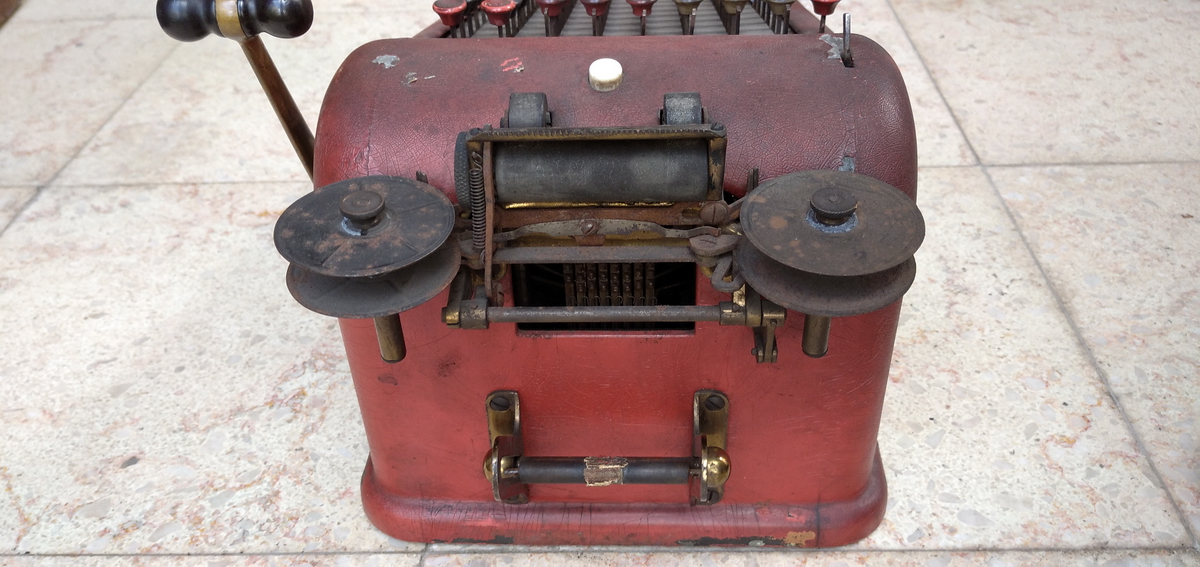
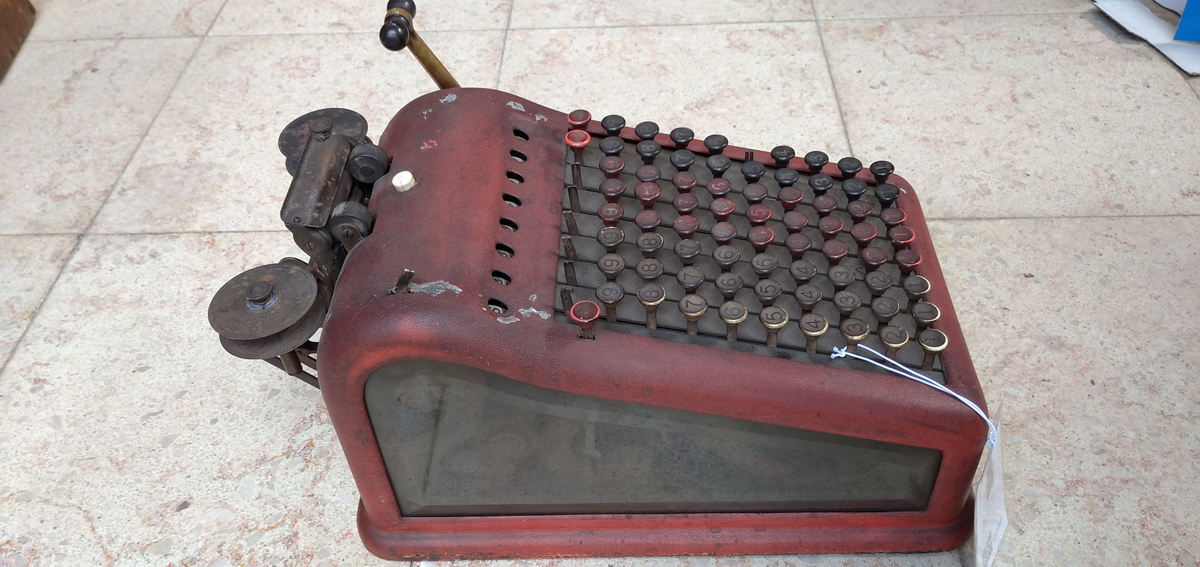
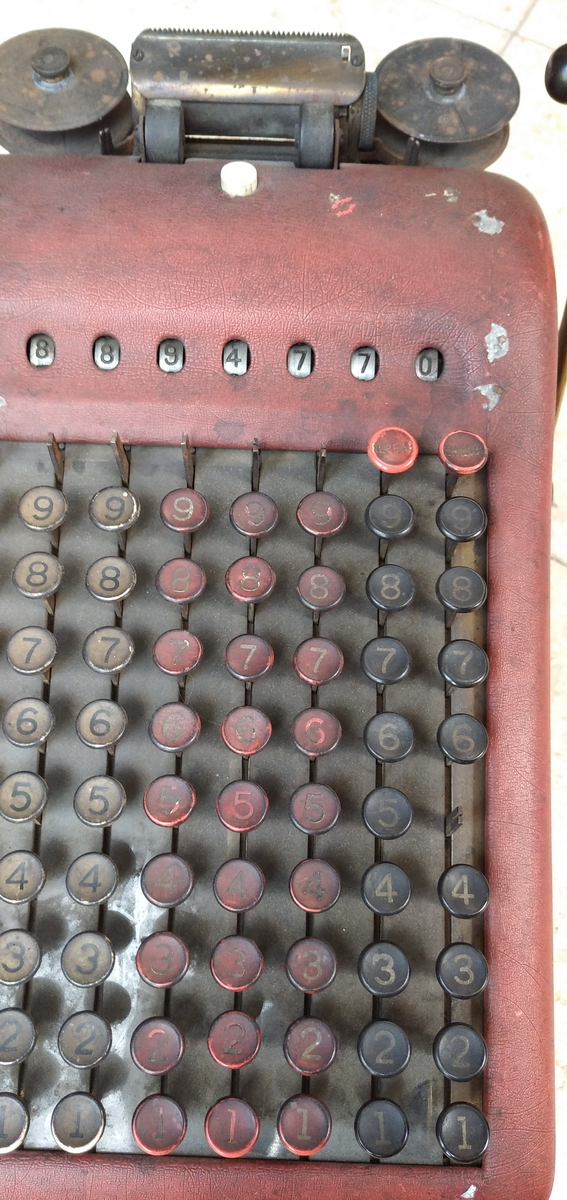
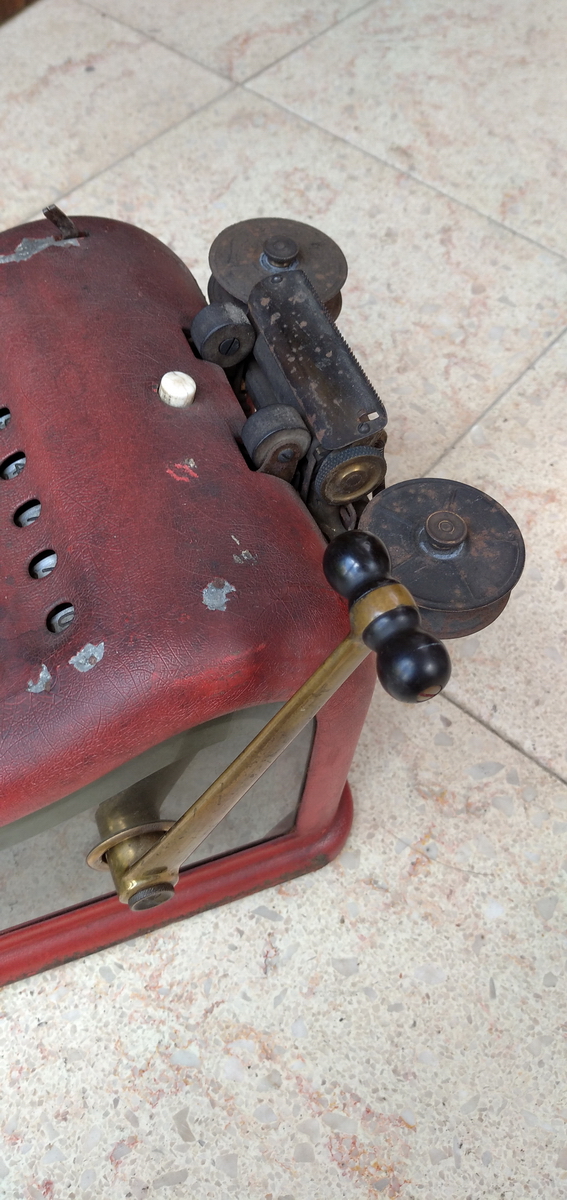
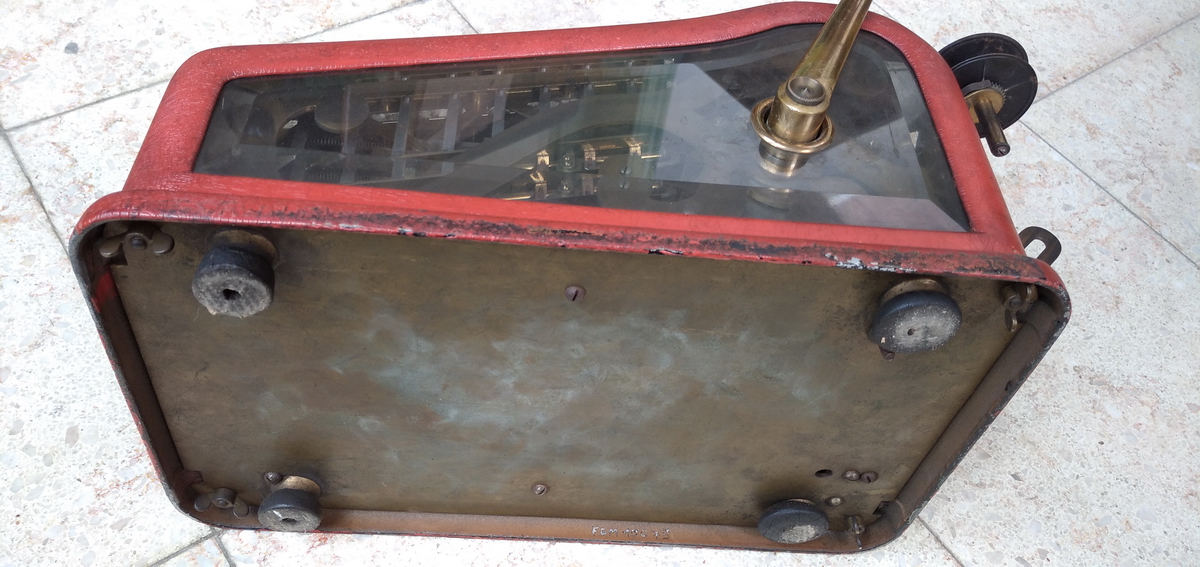
Then I started to take it apart.
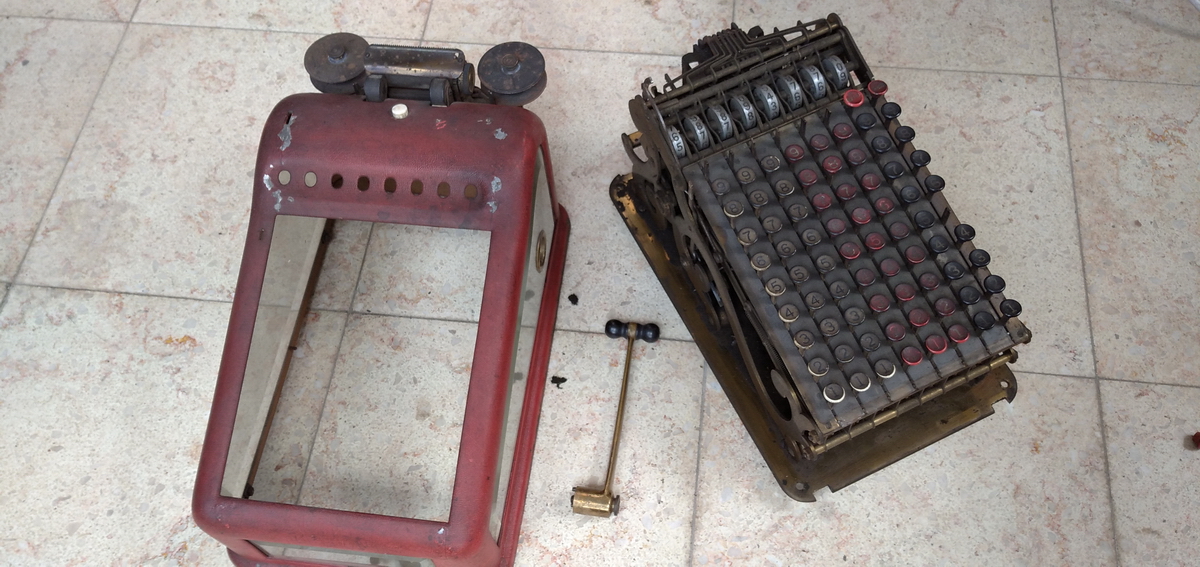
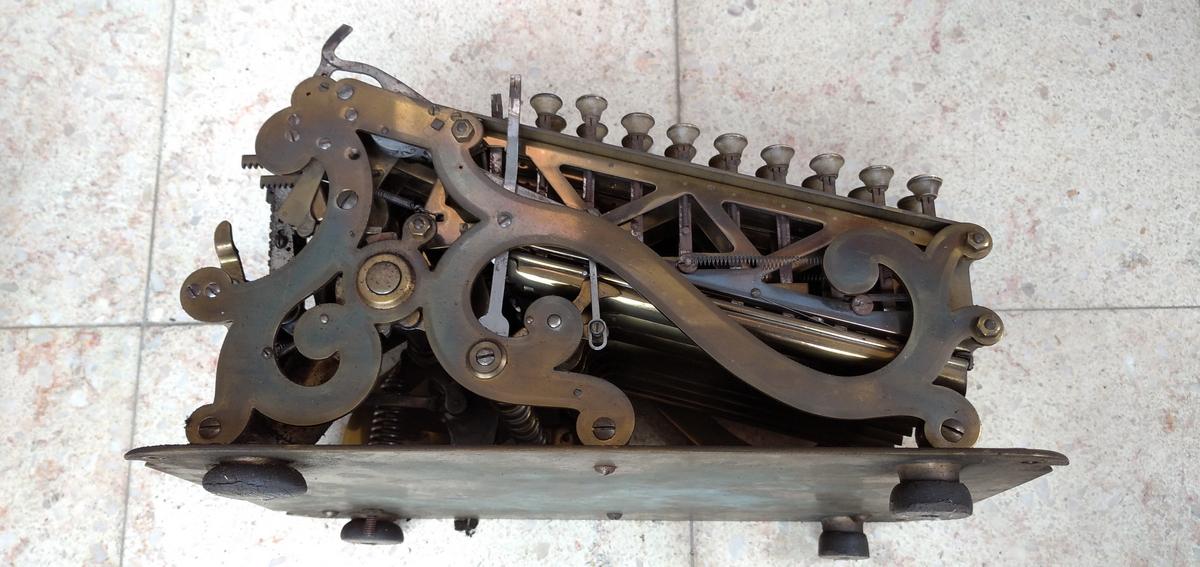
That led to some surprises - the keyboard base is actually glass - the machine is entirely see-through, with the glass keyboard and glass sides.
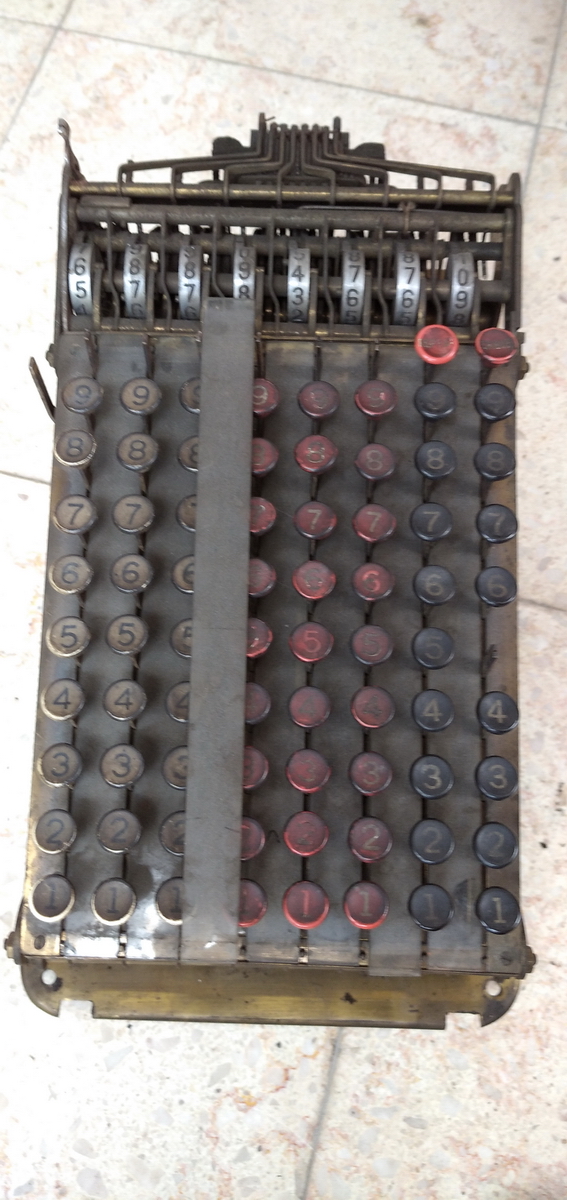
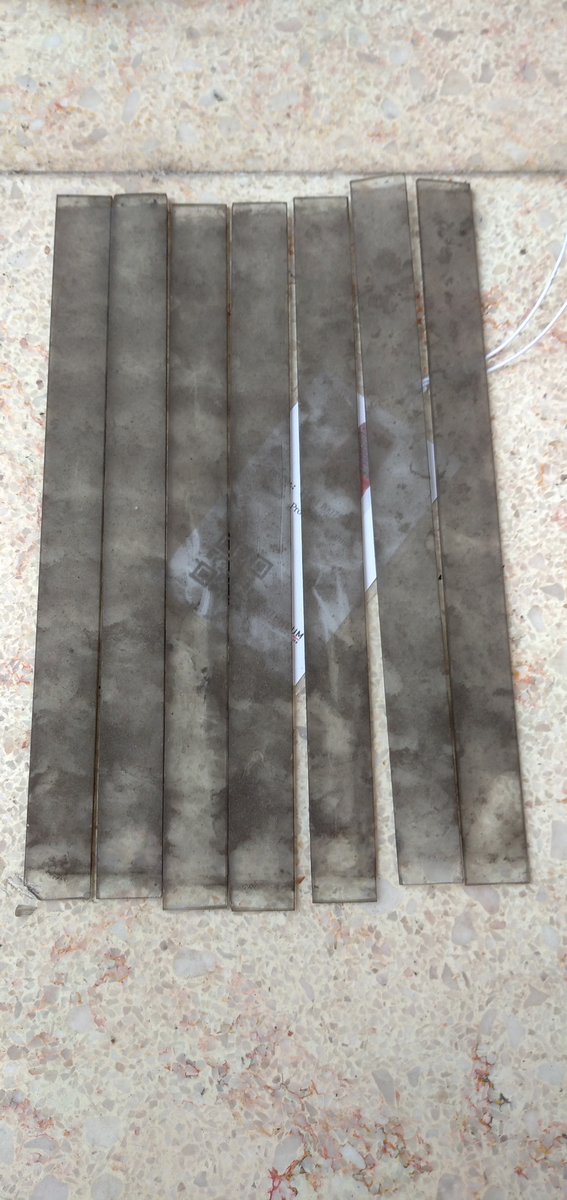
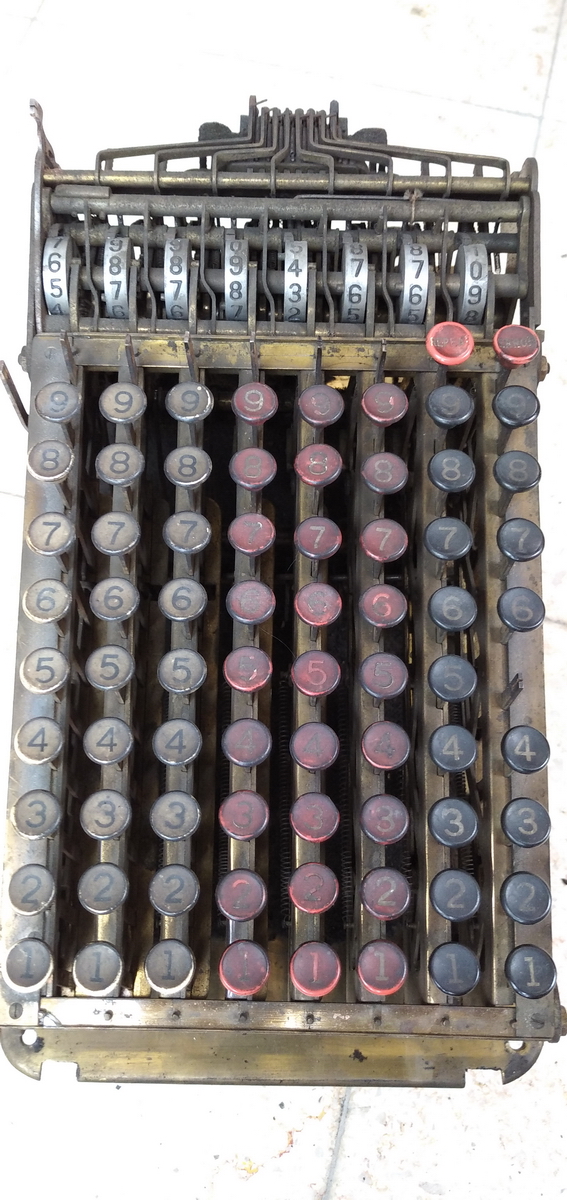
Its very, very dirty, also inside, so it would need a nice bath in kerosene.
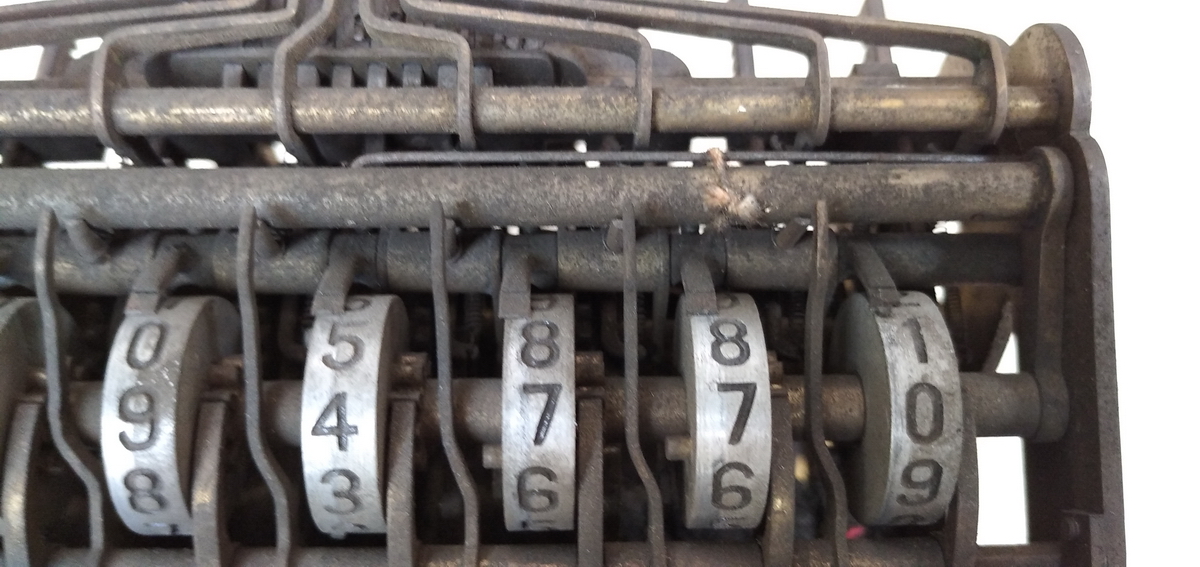
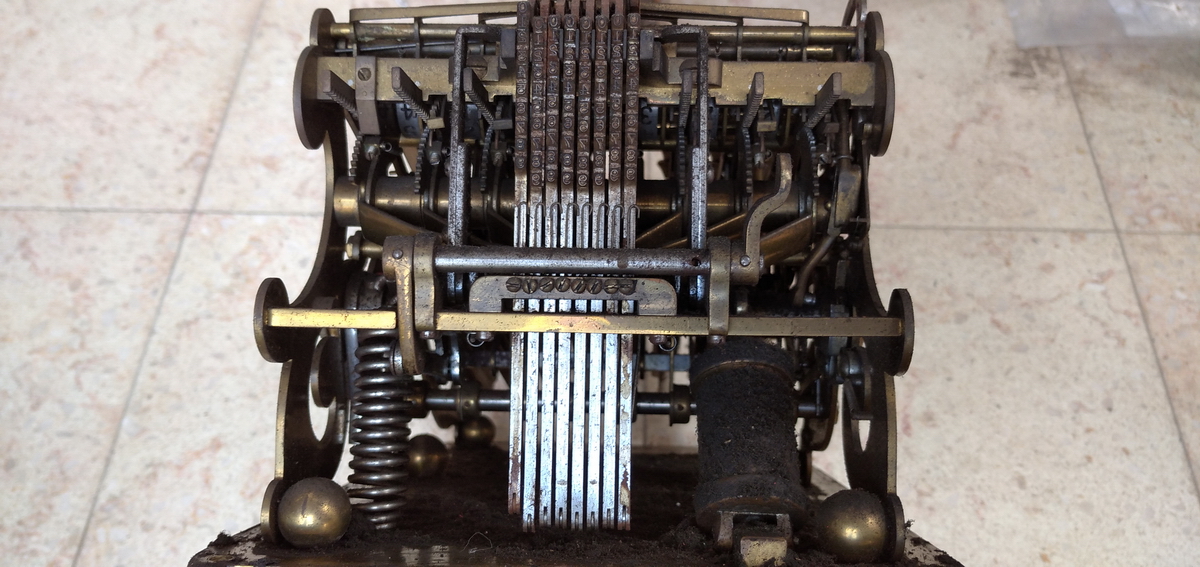
After cleaning off the case with soap and water, things start looking up - and the machine is very, very red!
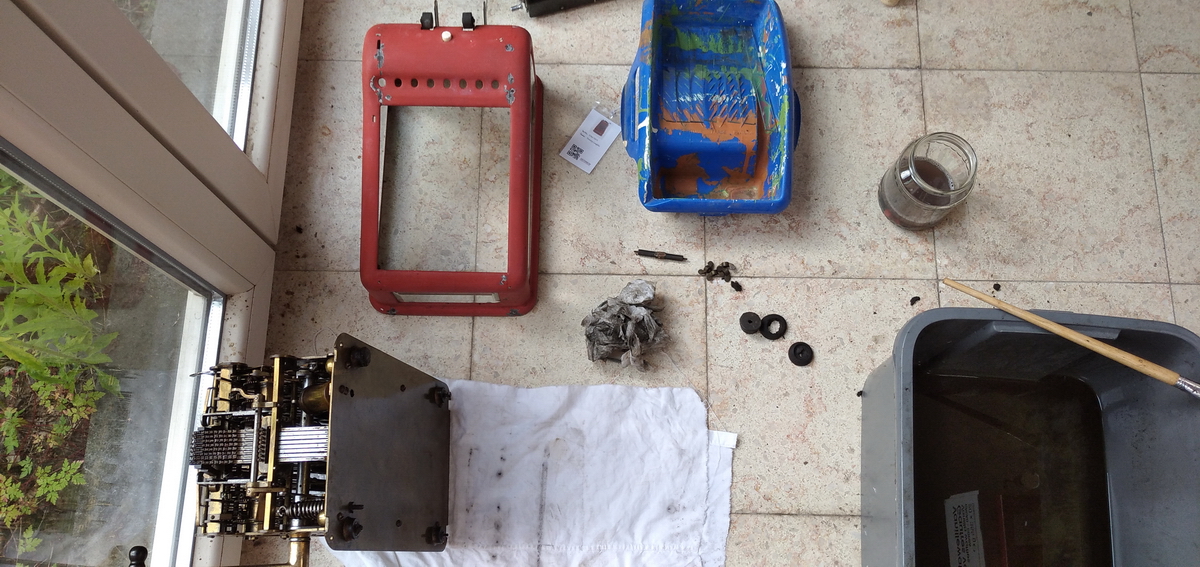
It is also very pretty, with the lacquered brass curly side plates.
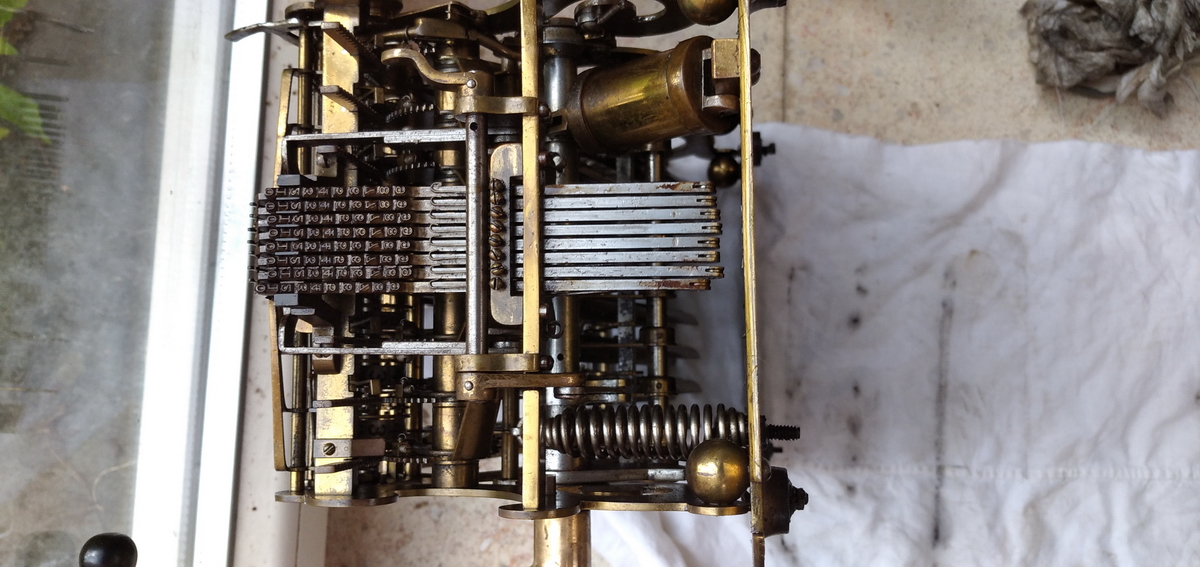

The keys got a bath in soap and water as well
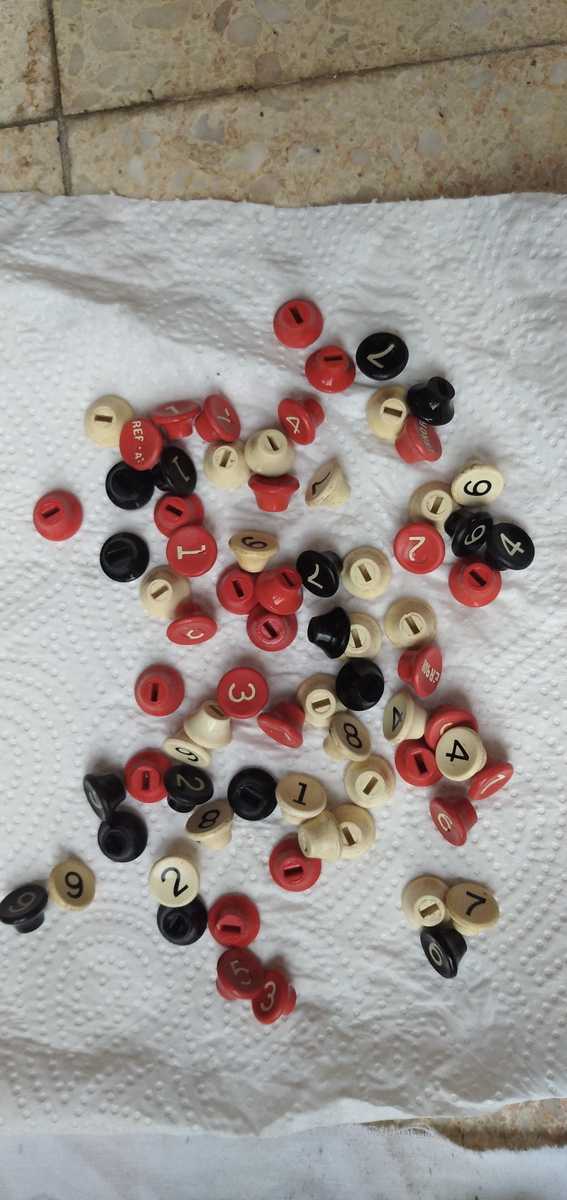
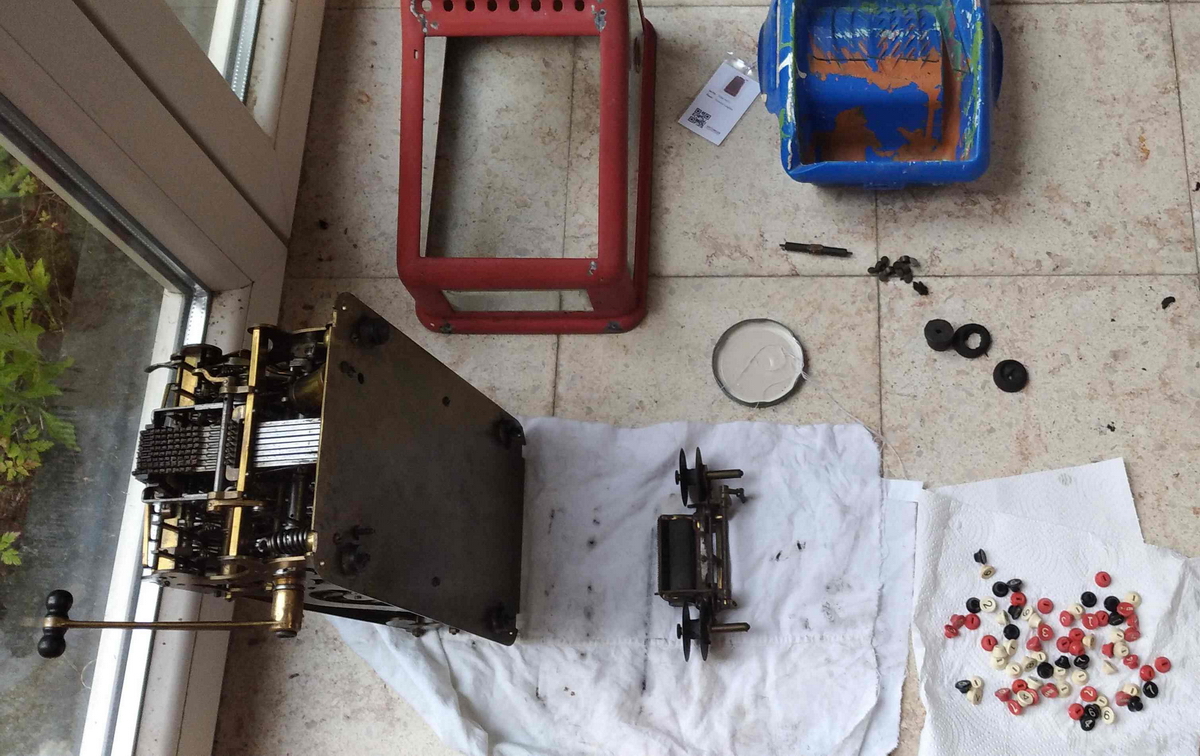
And then it was off to the bench for further scrubbing and cleaning, and slowly finding out what the problems with the machine were.
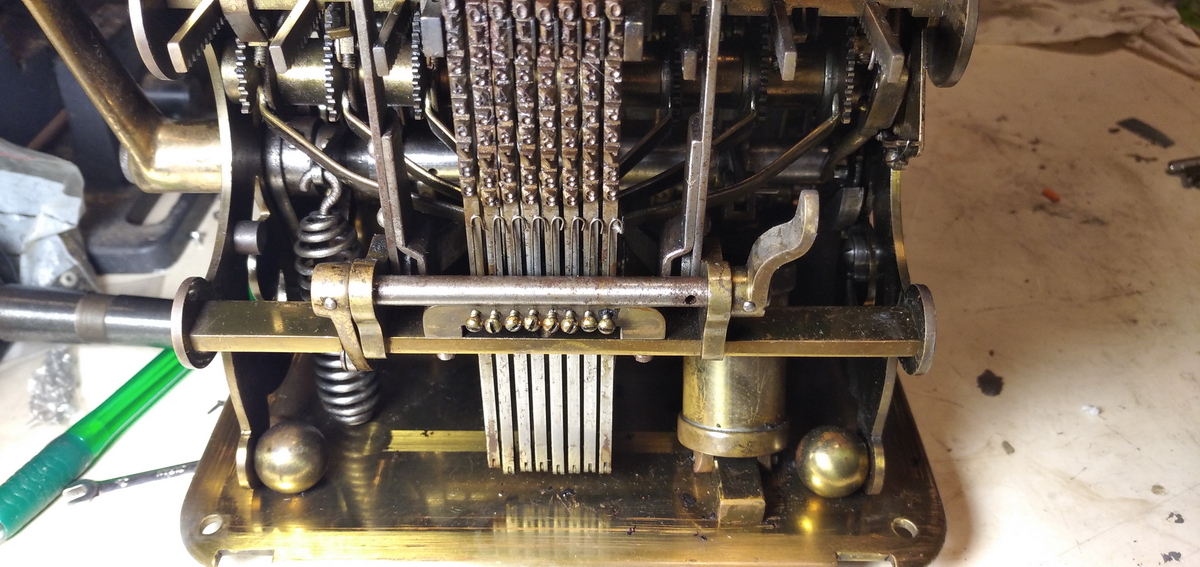
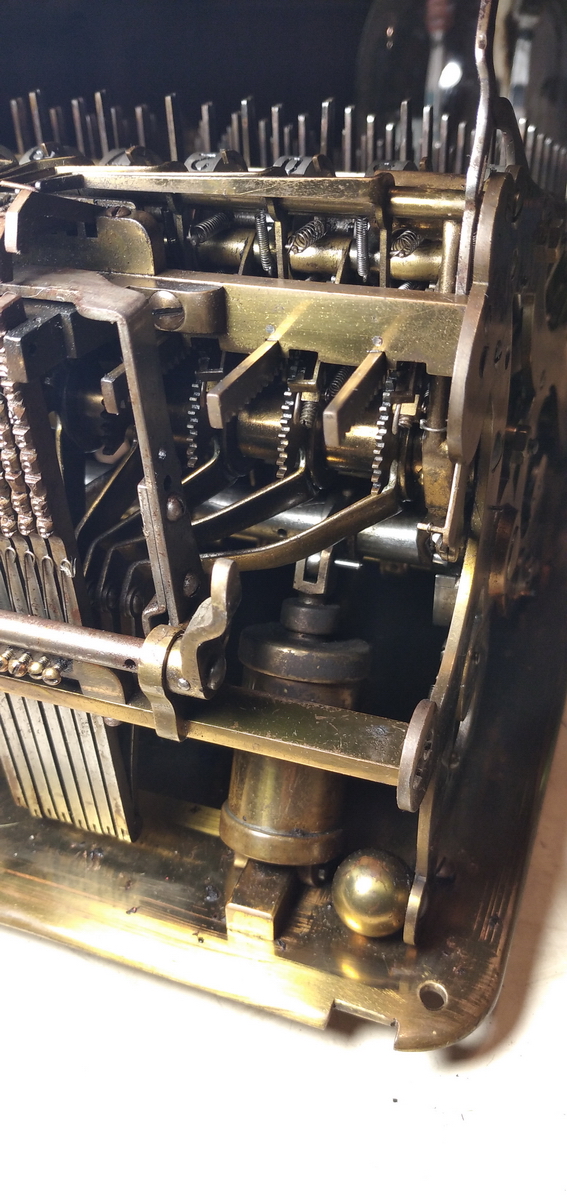
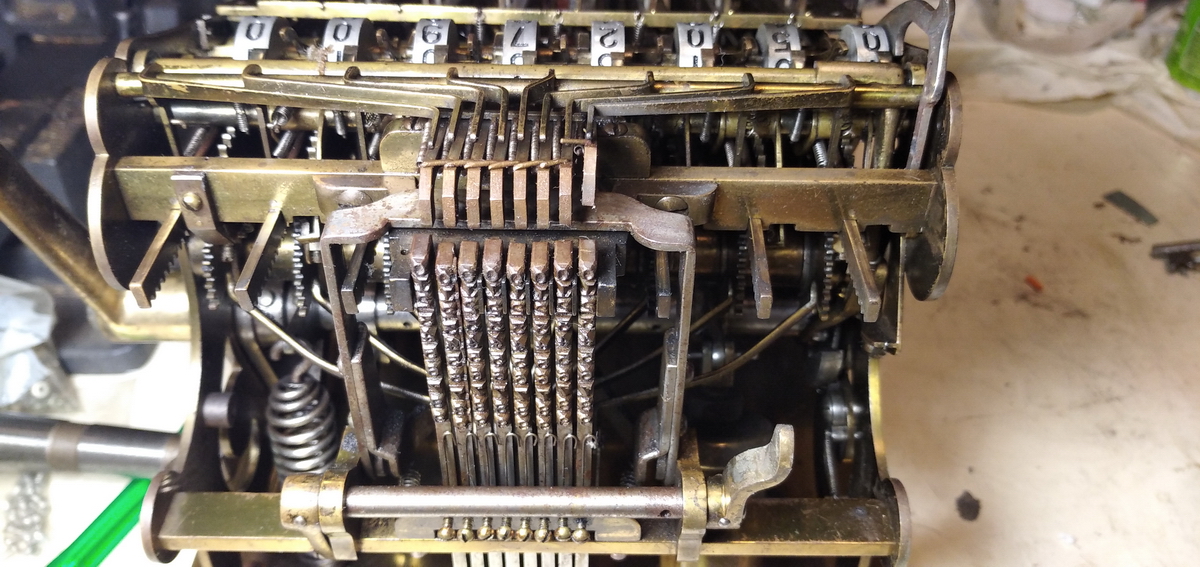
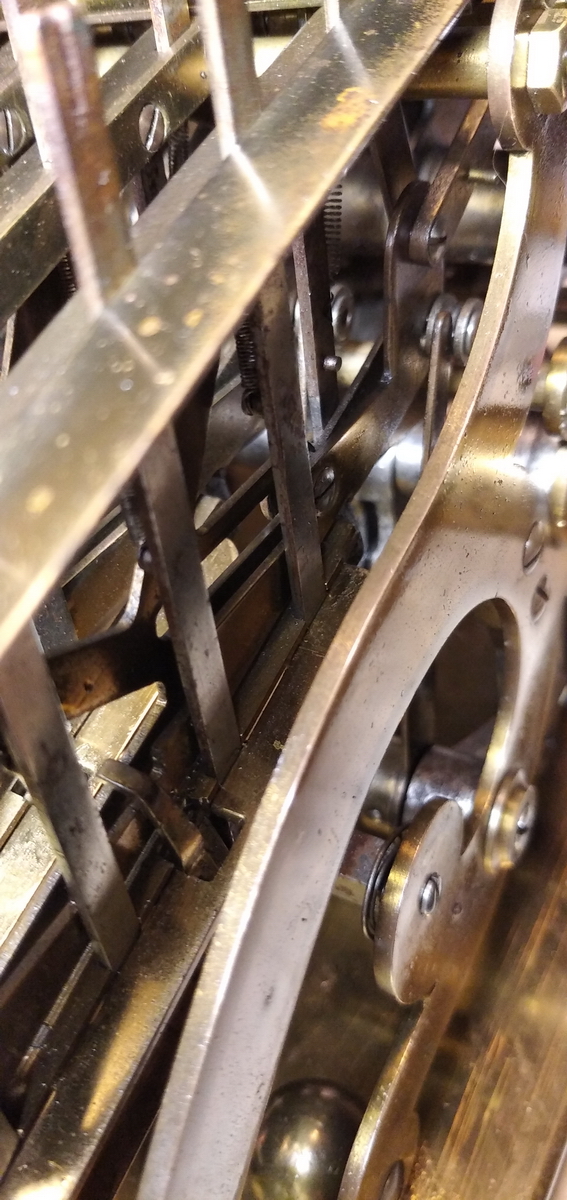
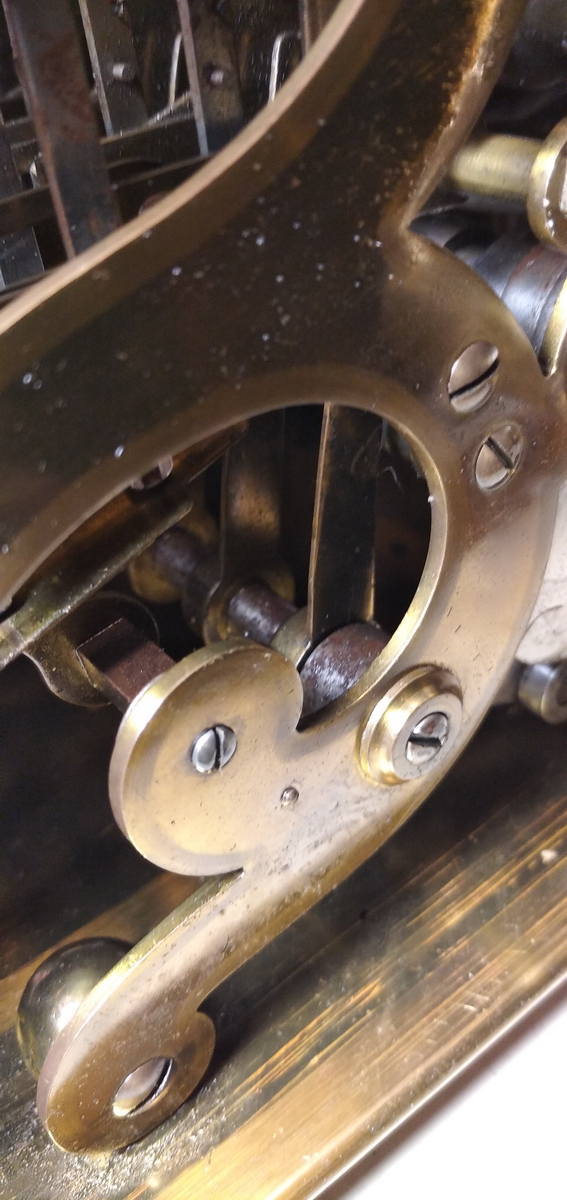
This is where the tens' carries live ...
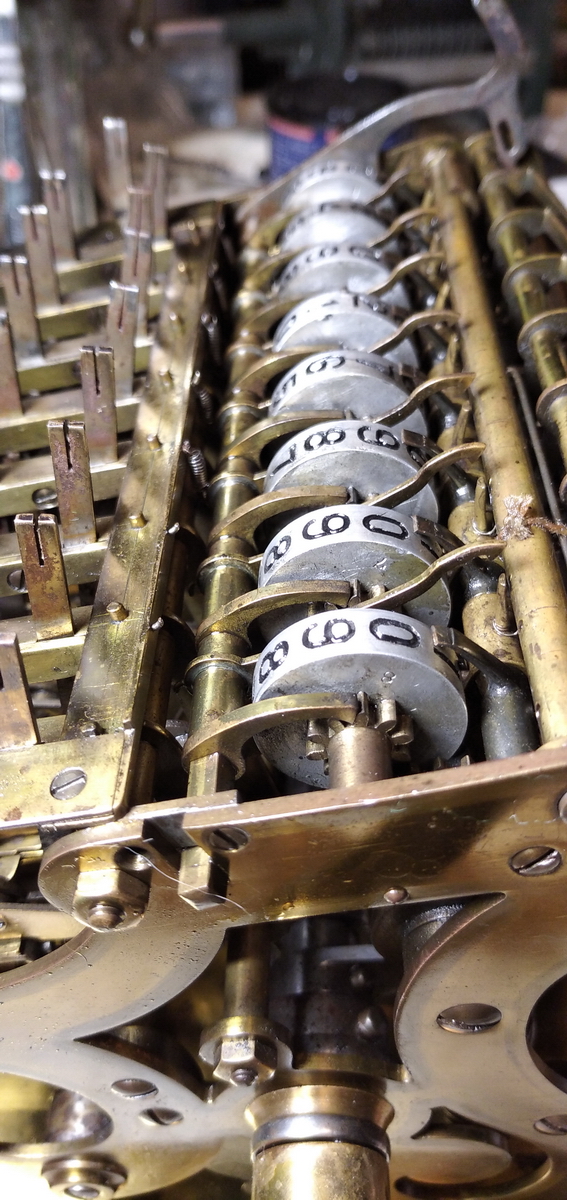
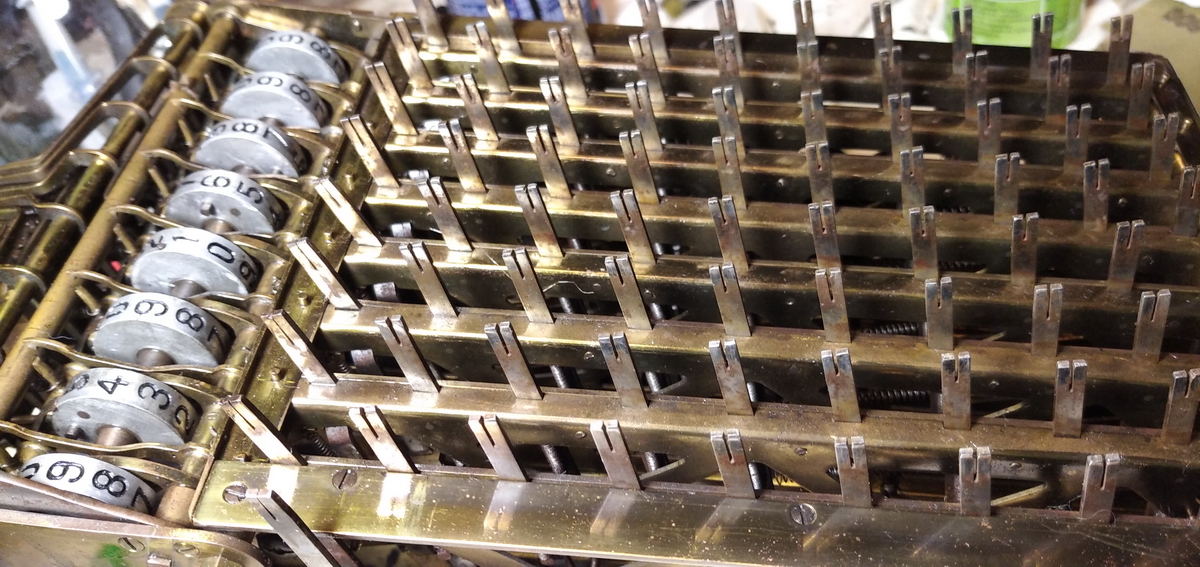
And this was the first major problem - the steel pin holding the button for resetting the register in place was missing. I made one. In installing it it also became clear that the entire top back part of the machine with the rod, right in front of the pin, is actually not attached to the rest of the frame, except by friction - it can slide left and right, screwing up the entire functionality of both the printing attachment and the tens' carries. Oh dear ...
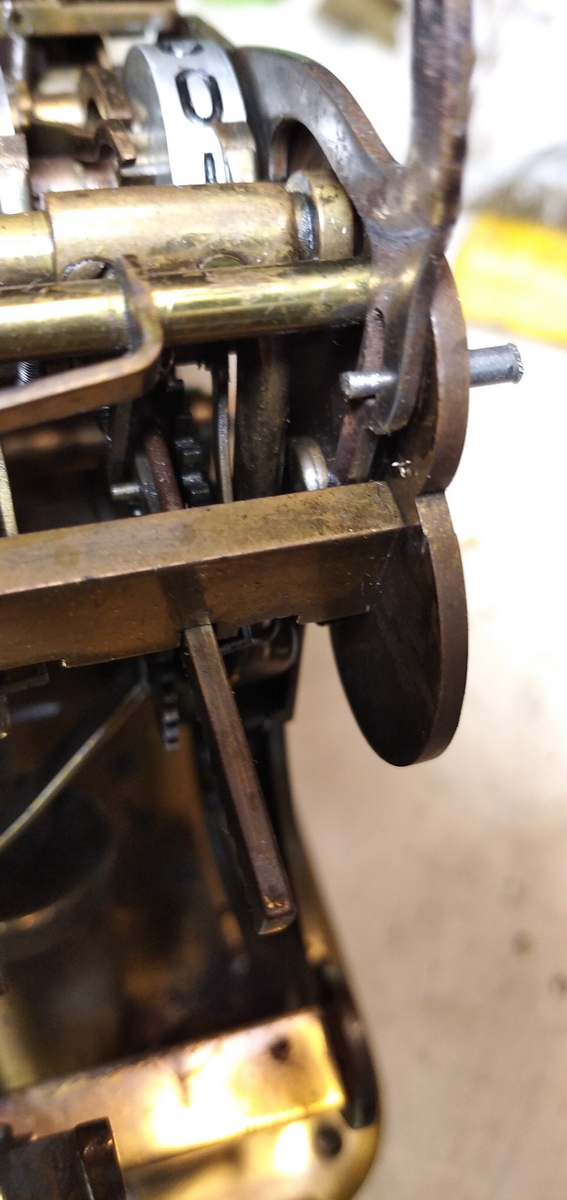
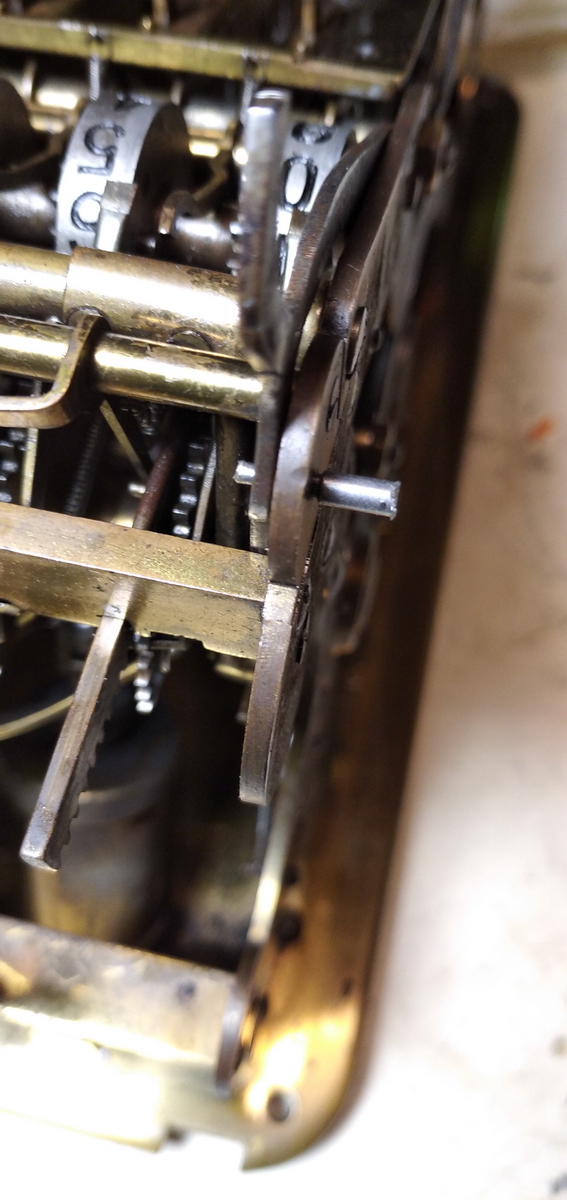
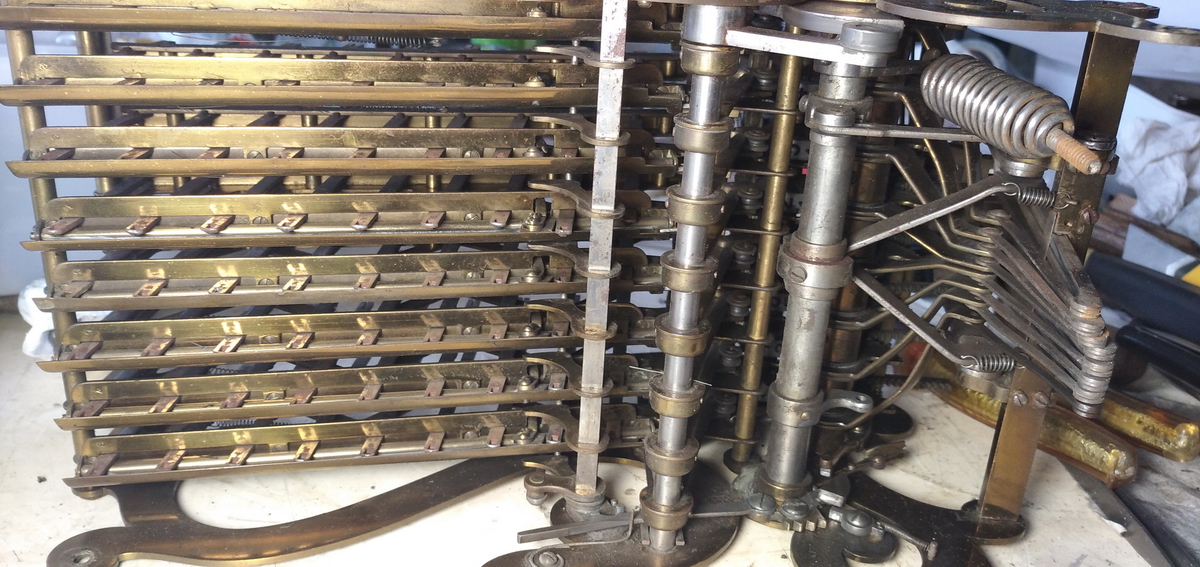
I took the entire machine off the base in order to be able to clean better. The damper stayed attached to the base.
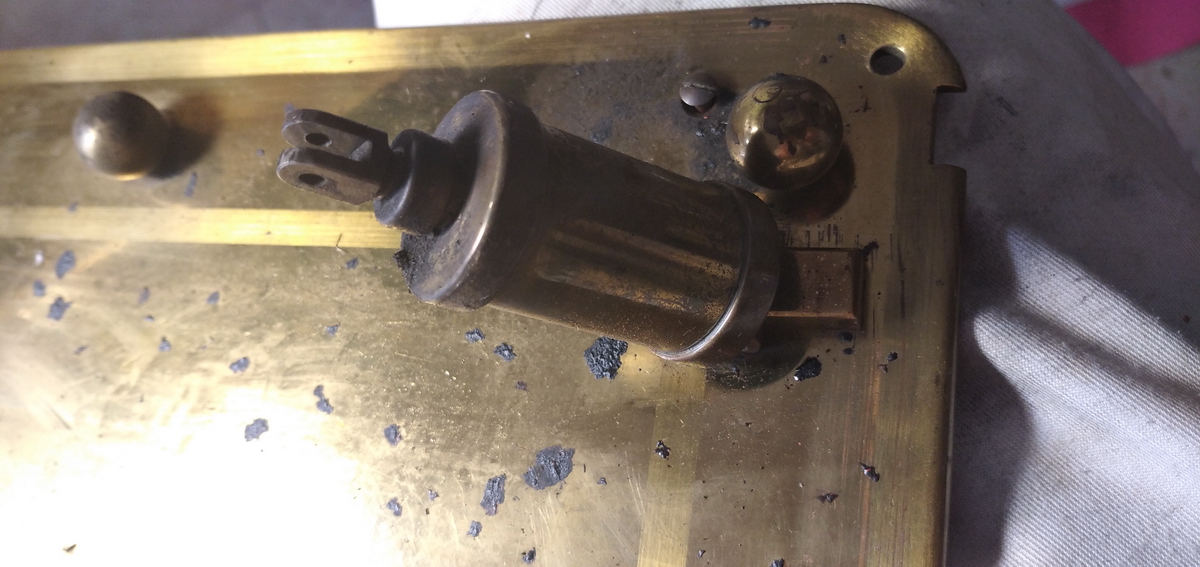
This is looking up from low on the back side of the machine. The geared racks' movement is connected to the keyboard, and moves the sectors, which then move the totalizer if it is connected to the sectors.
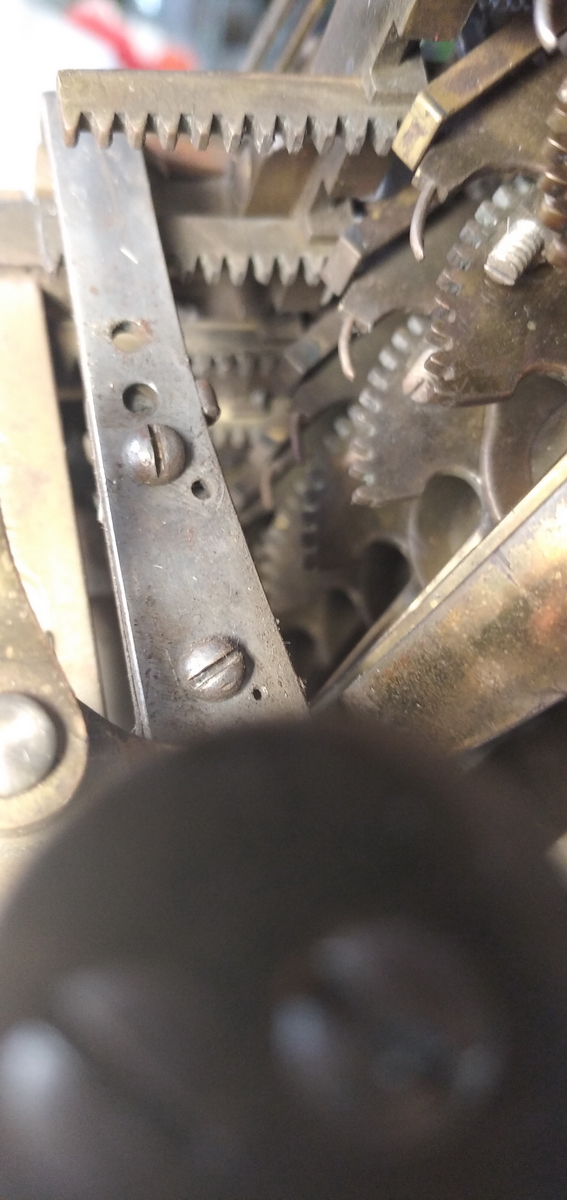
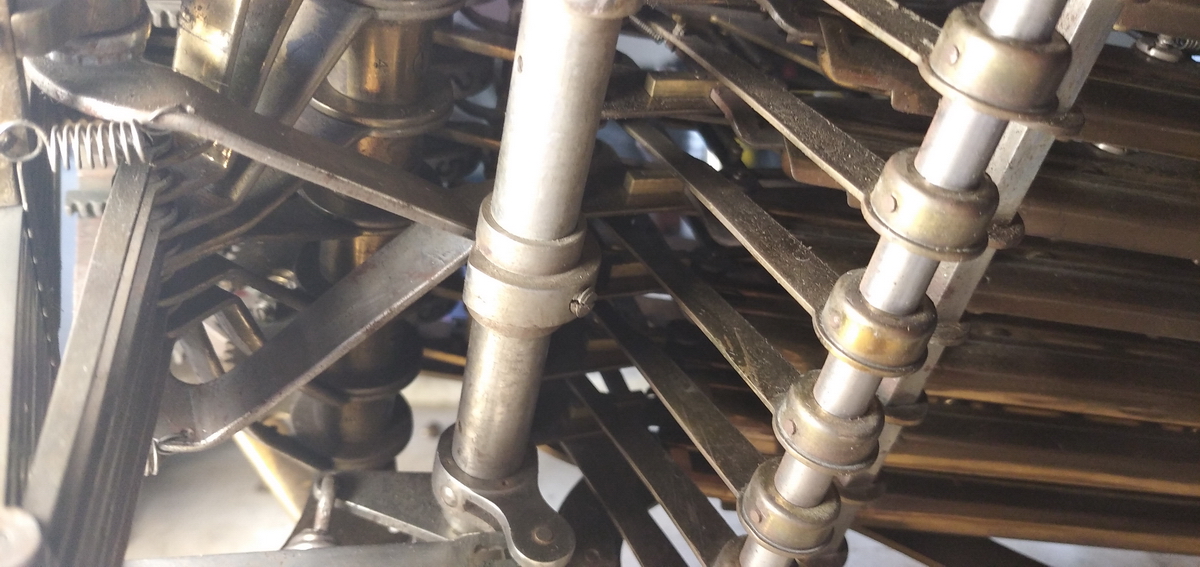
One of these was had become disconnected from its pinned collar. I soldered it back into place. They are levers that operate the release of the geared racks according to the setting of the keyboard.
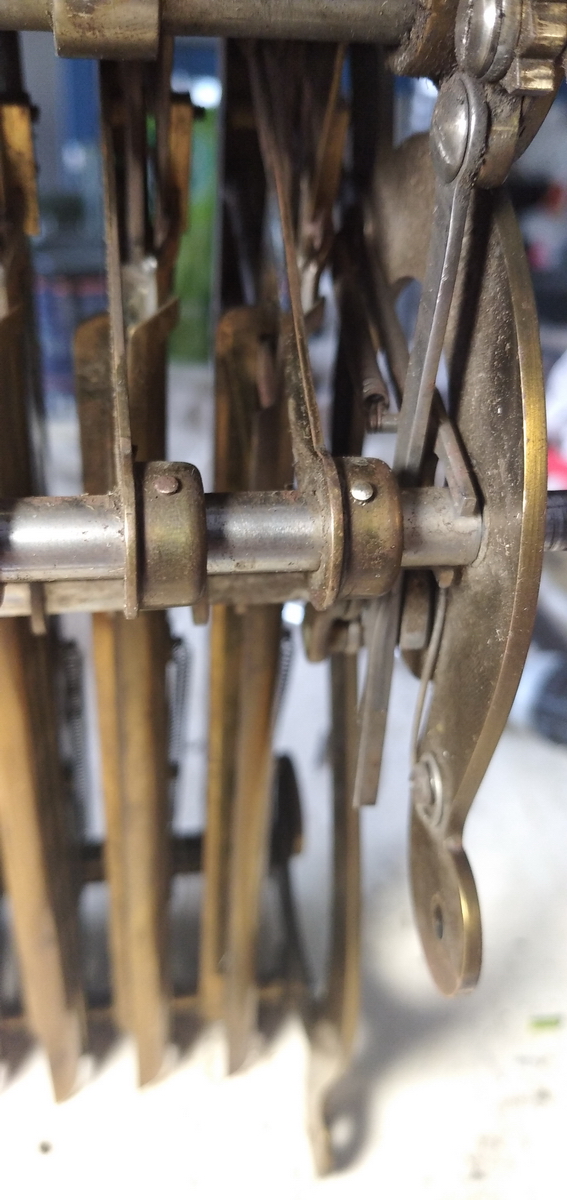
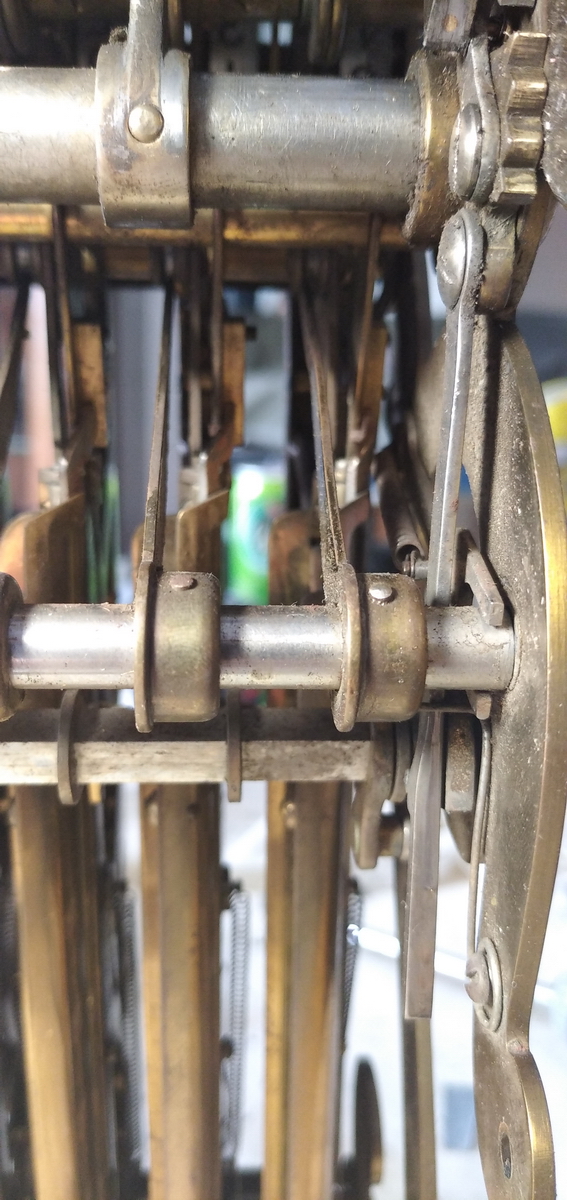
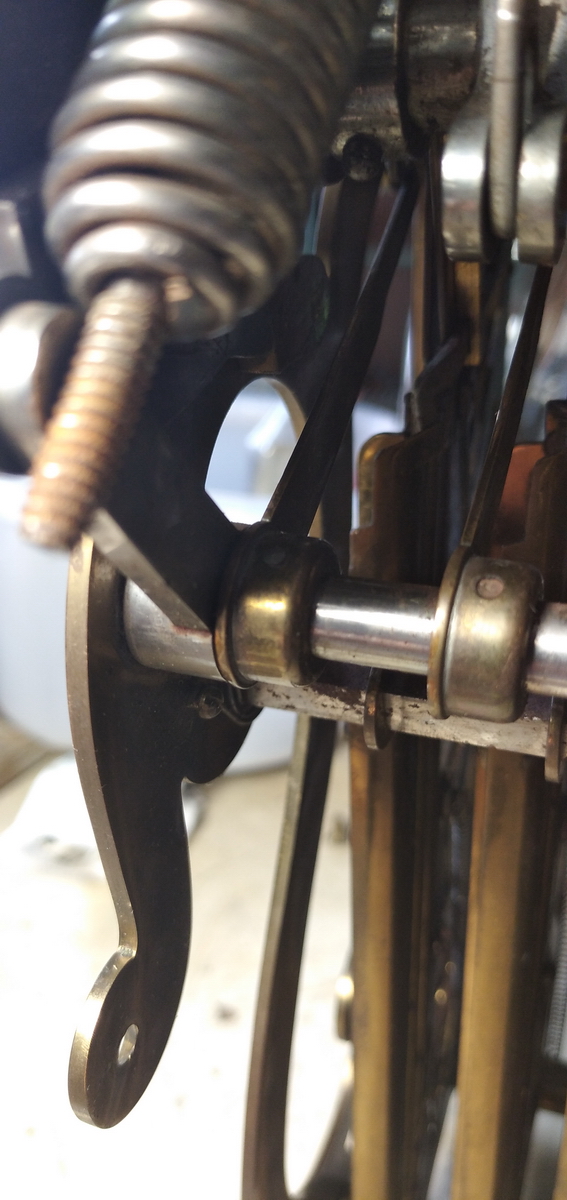
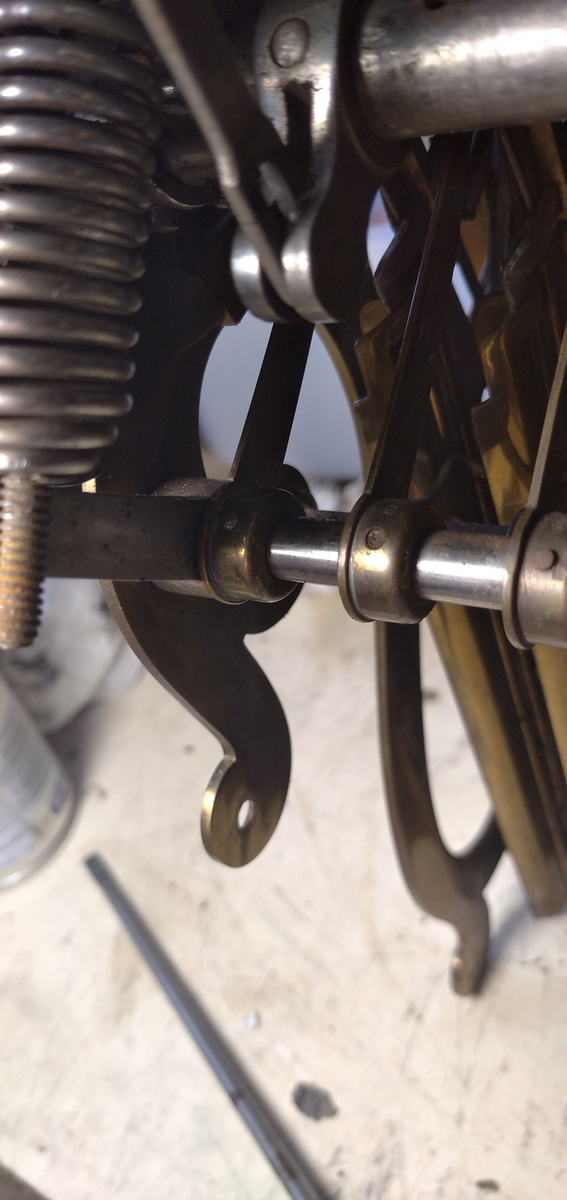
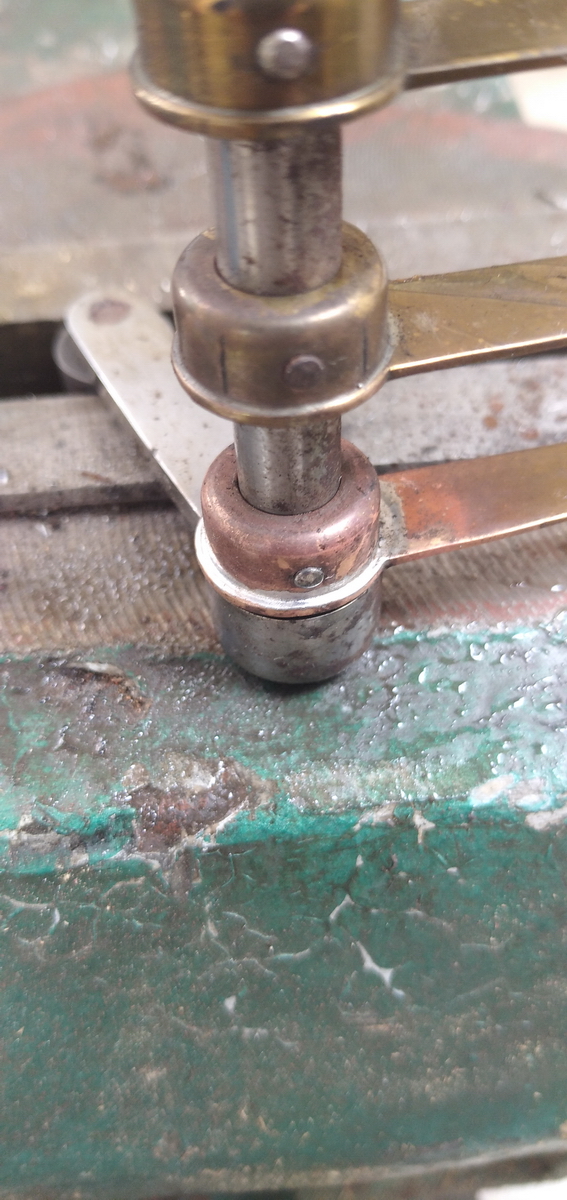
This is the heart of the machine. The triangular piece in the middle of this picture follows a convoluted path through the mechanism, pushing levers this way and that, as the main lever is pulled, and depending on the state of the machine will add what is in the keyboard, or, if the totalizer button is pressed, totalize and print, or clear the register. It does this by taking the register out of or into engagement with the printing bars and the keyboard racks. The register is spring-loaded, so that when entirely disconnected it jumps back to zero by itself. The whole setup is very sketchy, and it is easy for things to go wrong, especially because the racks and sectors have tight spots which makes them hang up, and causes the register not to return entirely into engagement with the sectors.
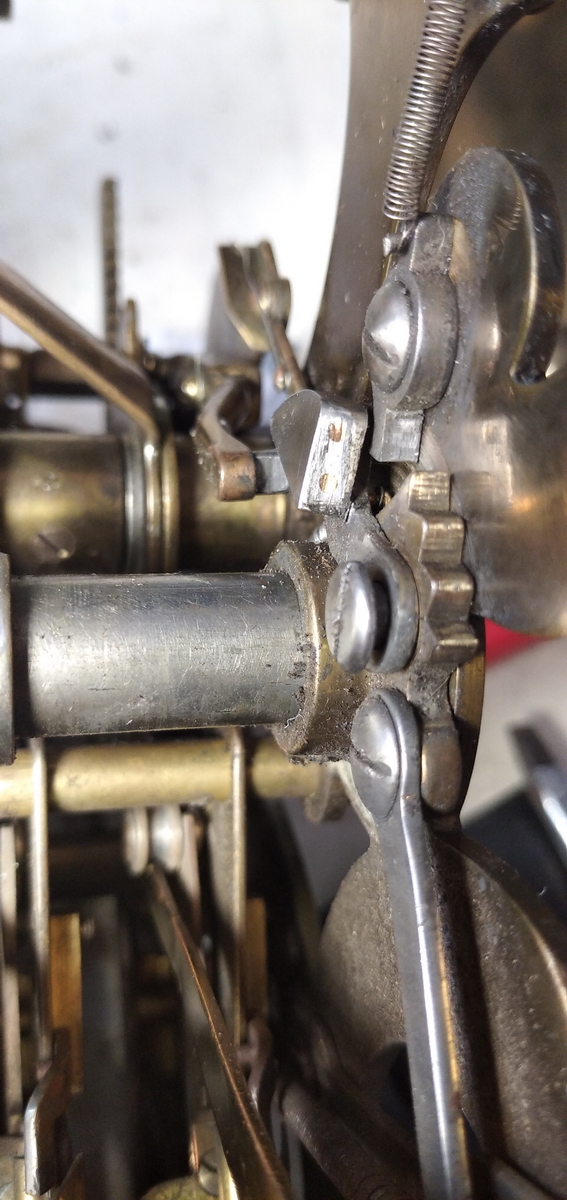
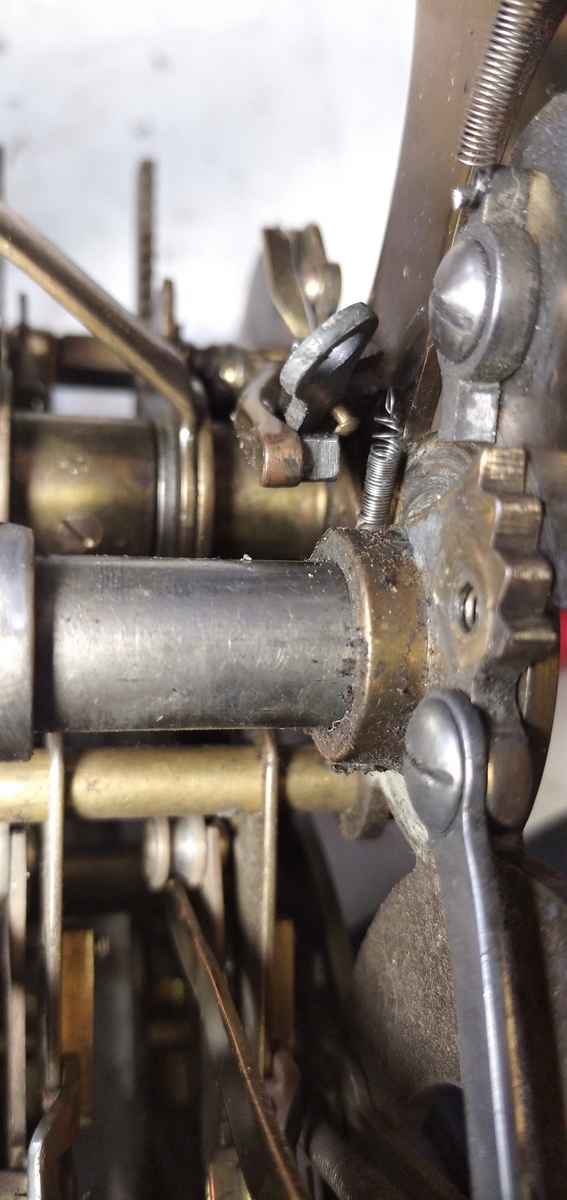
When all of this was more or less in order, and I thought that I had figured out how the totalizer and clearing button work (press and pull the handle for printing the total, pull the handle, then press and release for resetting the register), I thought we should try a tens carry. That went south in a hurry. The machine kept malfunctioning, and the tens carries are effected by a Rube Goldberg contraption where you have to think how it could have ever worked properly. Also the back part of the machine keeps moving around, leading to levers disconnecting all the time, and some judicious bending of levers is needed to perhaps get it to work in some columns. It does not help that the printing mechanism entirely obscures three keyboard rows, and cannot be easily removed. In combination with the keyboard racks binding on the sectors, and a small pile of metal shavings that started to accumulate on the base pltae of the machine out of the main bearing of the handle by the time I was ready to stop trying, this essentially led to the decision that this machine can never have worked as it was put together, and I gave up on trying to get it to work. That does not mean, however, it isn't still pretty!
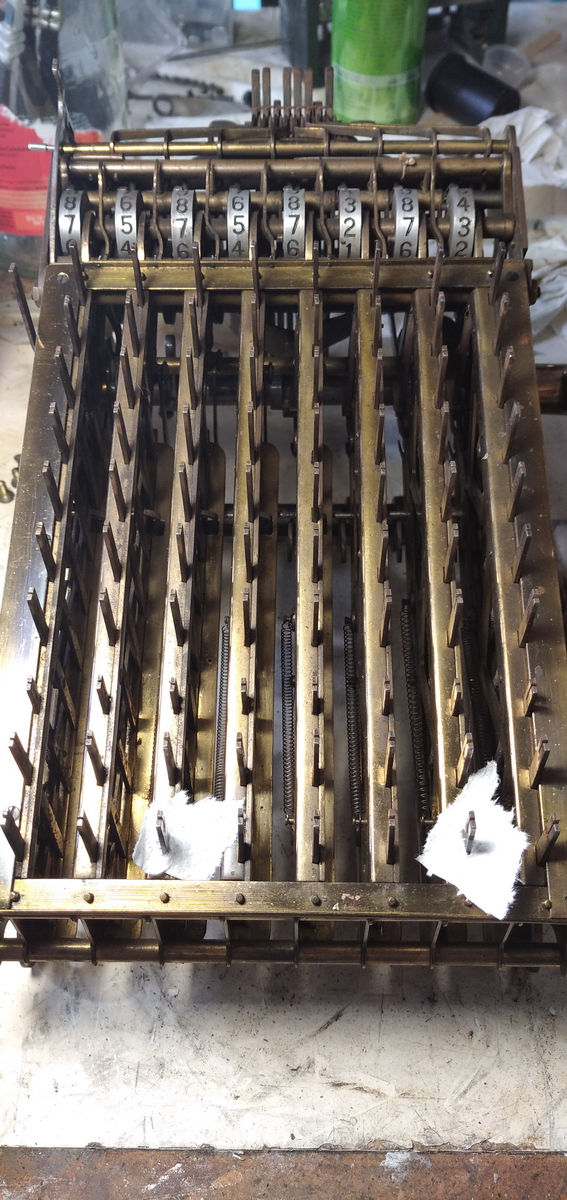
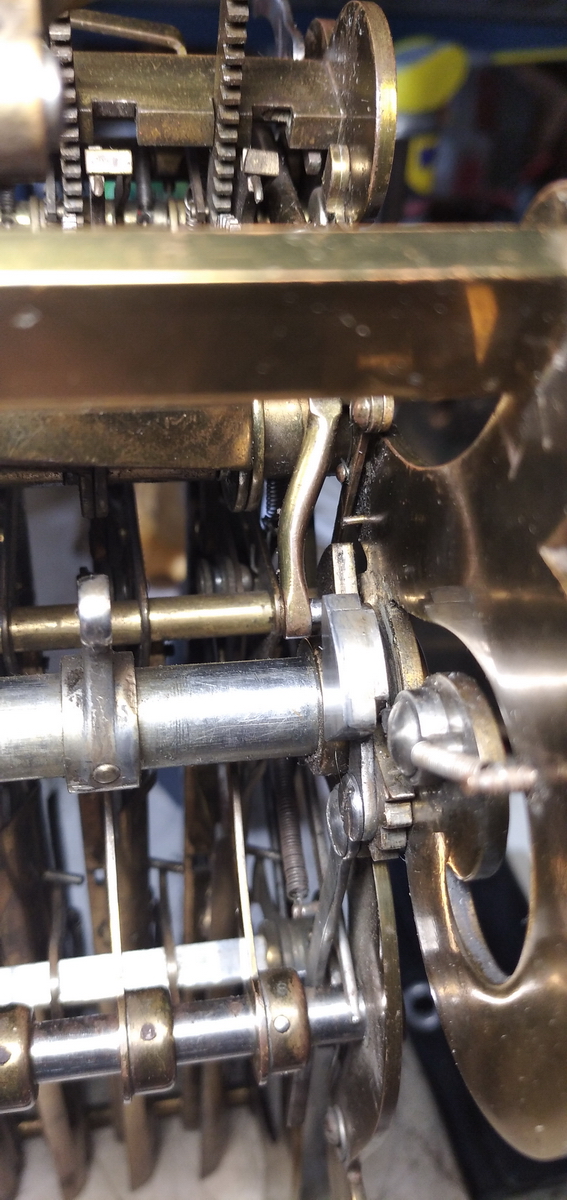
You can get an idea of how the whole thing works here: the geared rack shoots out to the front of the picture, up to the keyboard setting. This operates the sector, which is connected to the printer bar, that shoots up a corresponding amount. When being pulled back, the sector pushes against the other sector lying next to the geared rack, that is connected to the totalizer. The little L-shaped lever is operated by the tens' carry of the previous column, and when actuated allows the second sector to move further by one tooth, which in turn then makes the counting wheel in the next column move one extra digit.
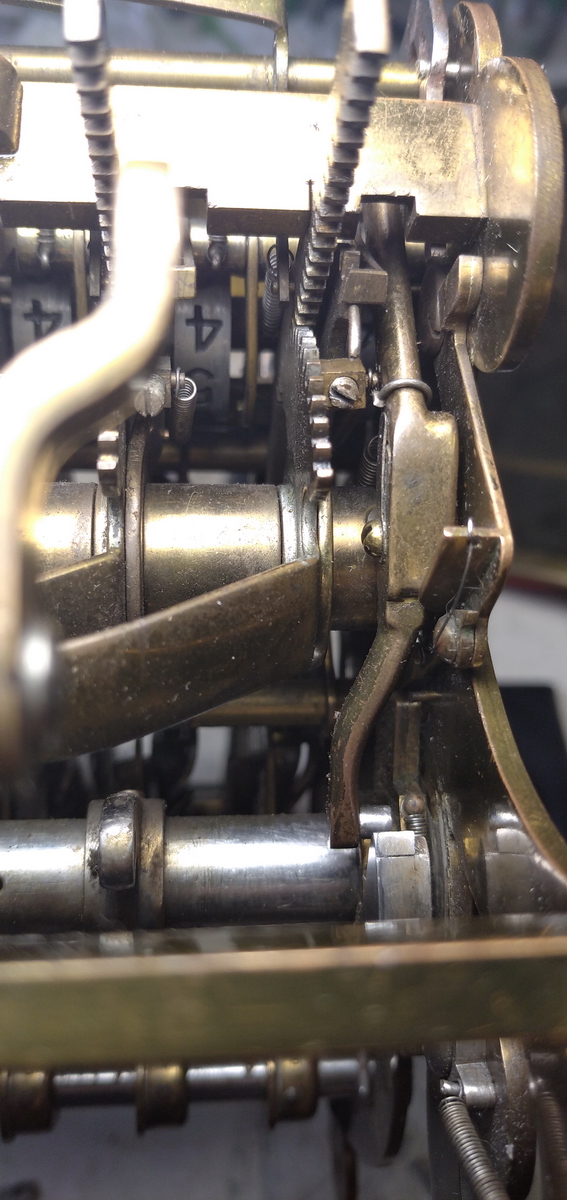
I then tried to get at least the printing function to work properly, but also there things had been misadjusted and I could not get them to work properly either- I don't think they ever did. There is a bar with "fingers" that press down on these levers, which makes the strap-like thing in the second picture below "catch" the printing bars and push them forward. I decided to get the levers out to properly clean them, but after reassembling, I still couldn't get it to work. I don't think it ever did.
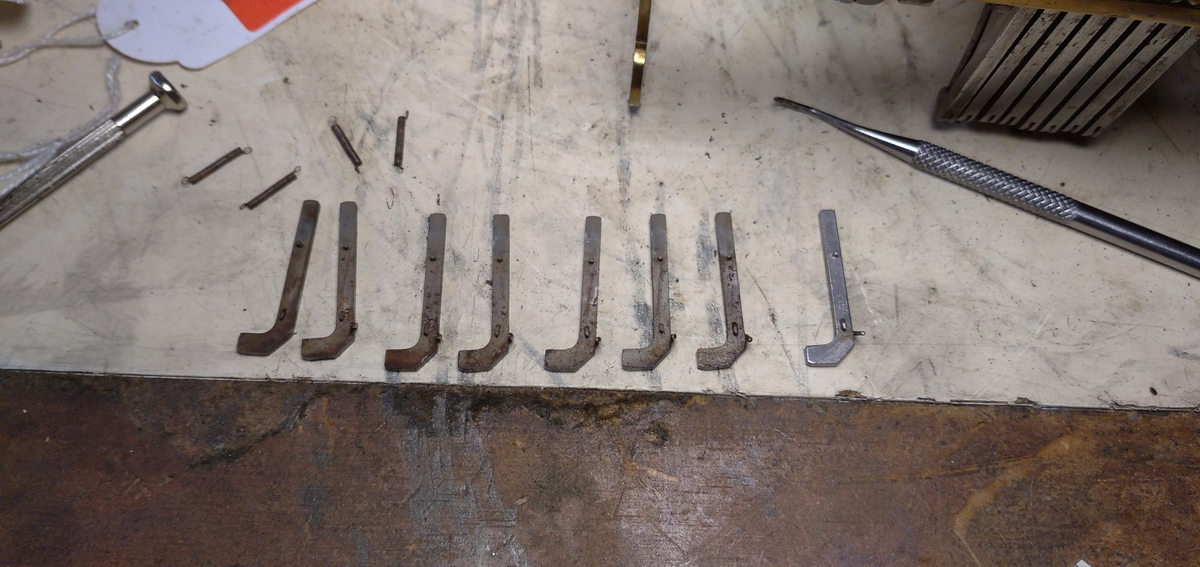
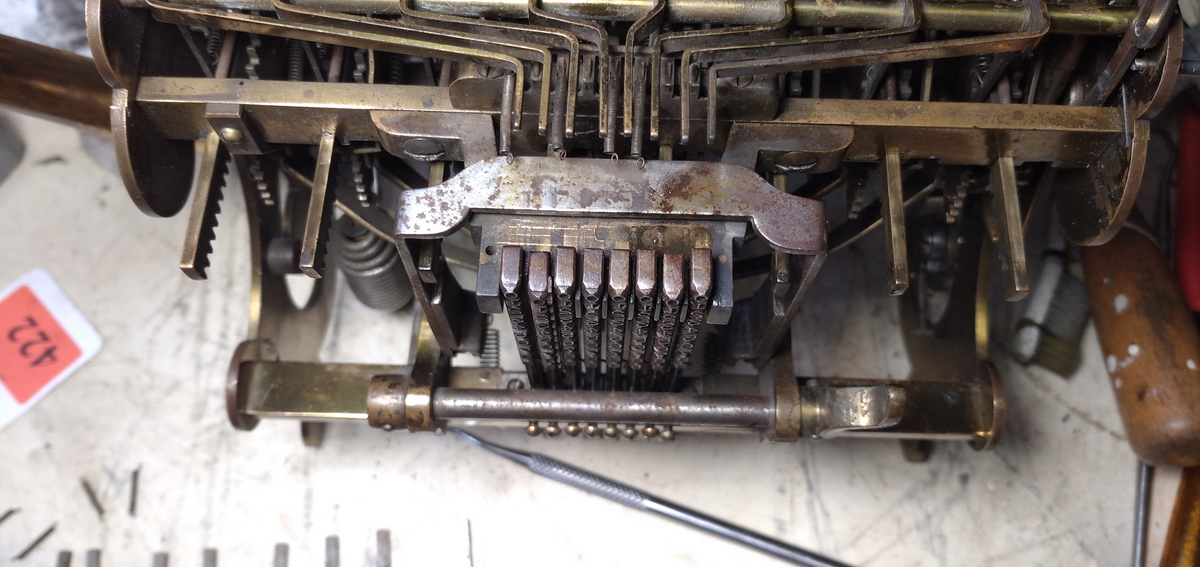
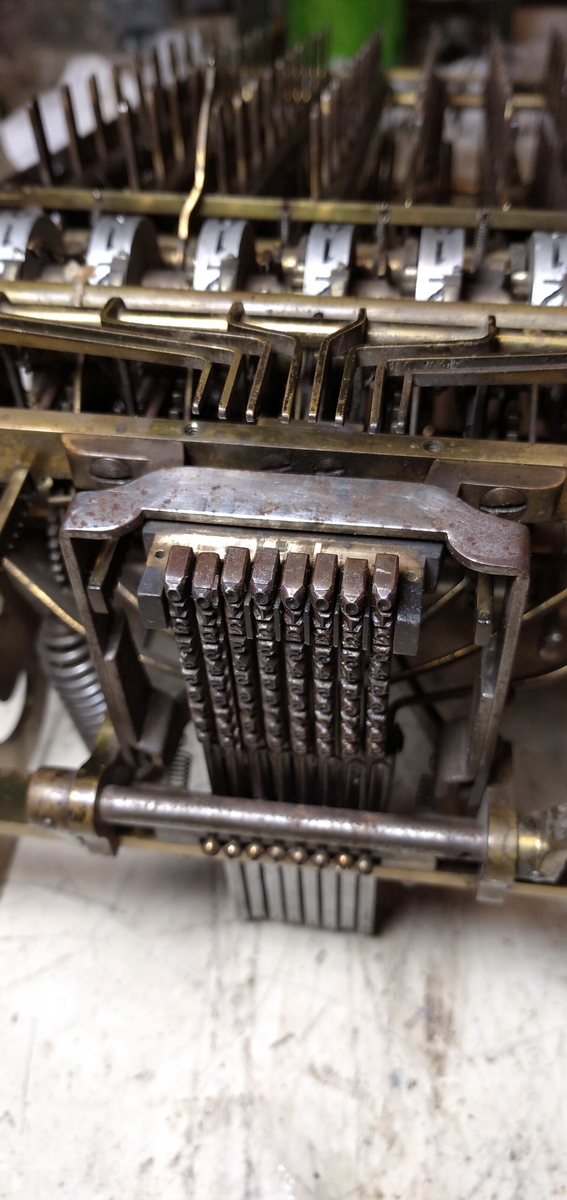
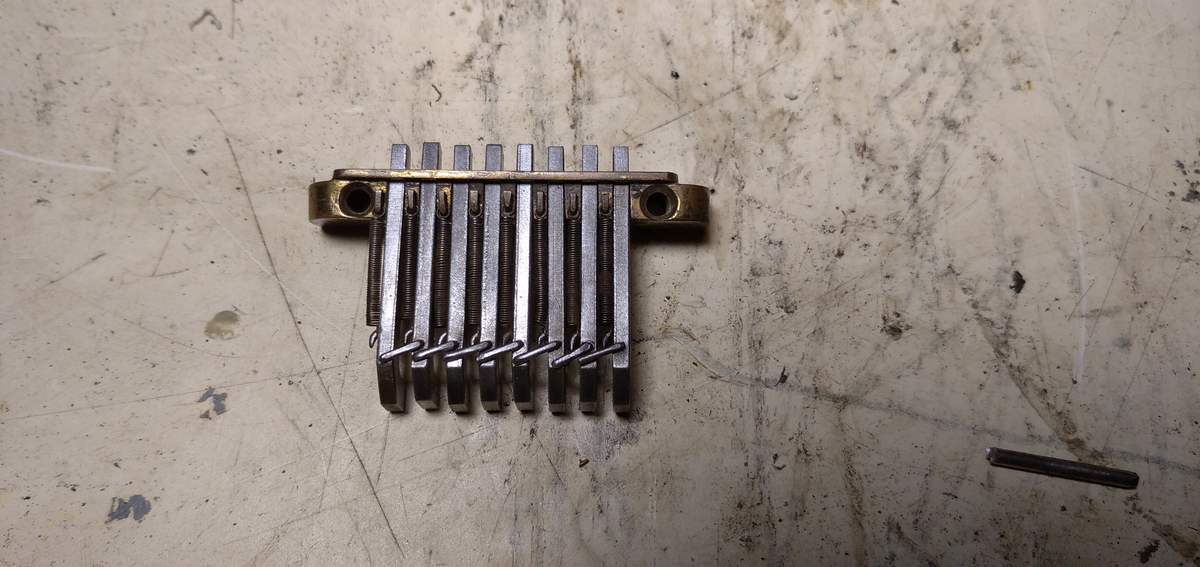
Obviously, the poor thing needed new feet.
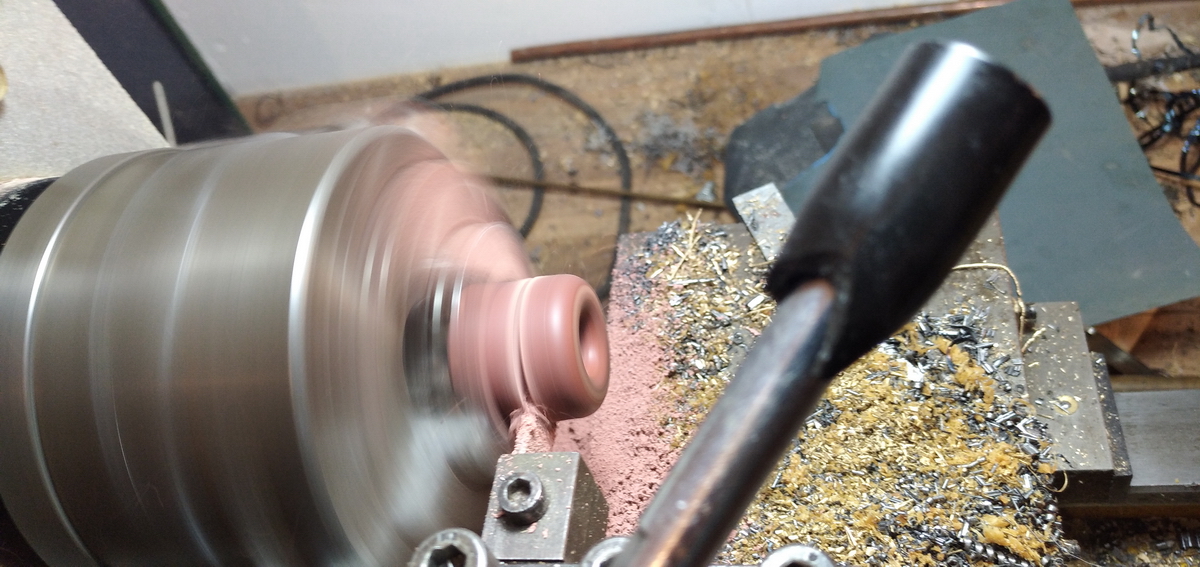
This is the system used for tens carry - the numeral rolls are supposed to trip a lever that then interfaces with the geared sector on its way back at the end of a lever pull and moves the next column one place further. The adjustment of the levers is very critical, as is binding between the geared sector and the toothed rack. Since everything is bendy and springy, it seems impossible to adjust. Some numeral wheels refuse to budge even as the lever is tripped, because of binding, other insist on moving two digits instead of one. Only three columns had a functional tens carry, and on the others, nothing much could be done to get it to function properly - it is just not a very good design, or at least not very well executed. Perhaps it could work, if nothing would bind.
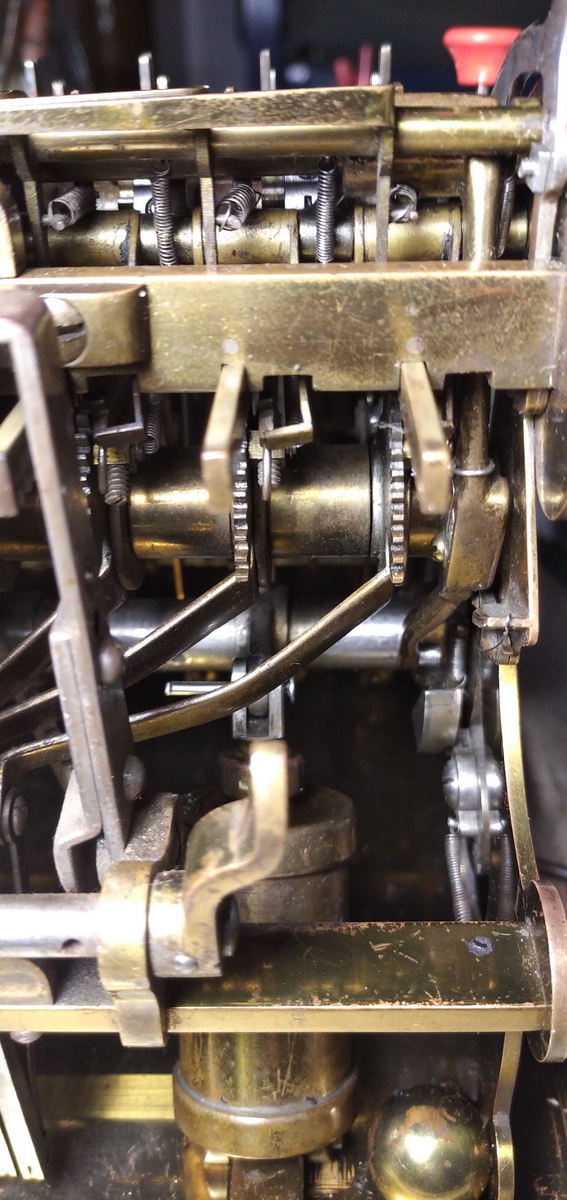
This was the state of the printing system
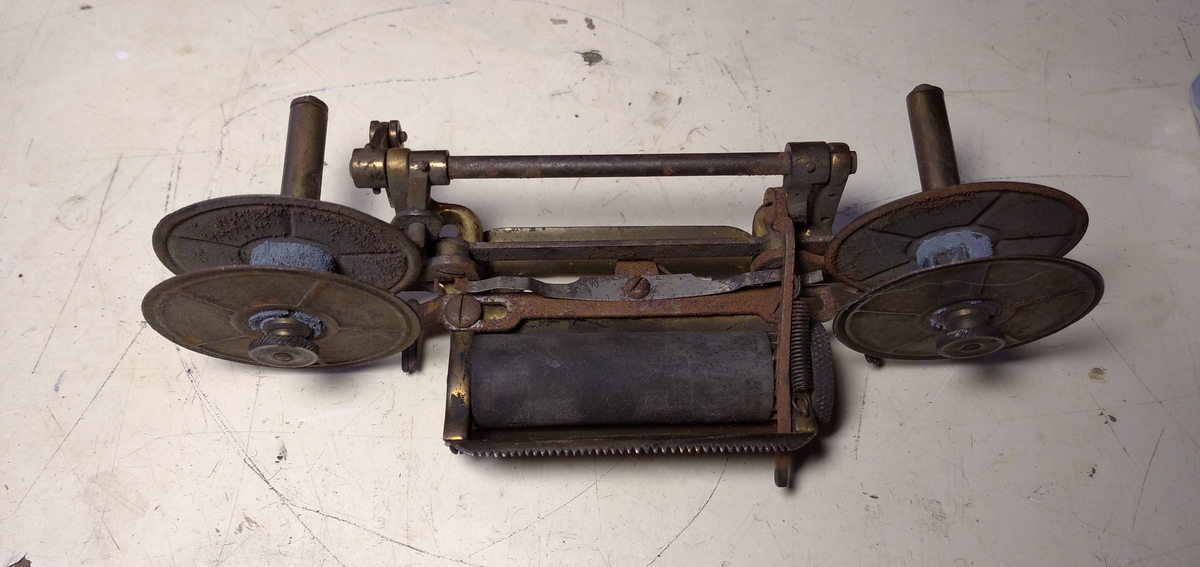
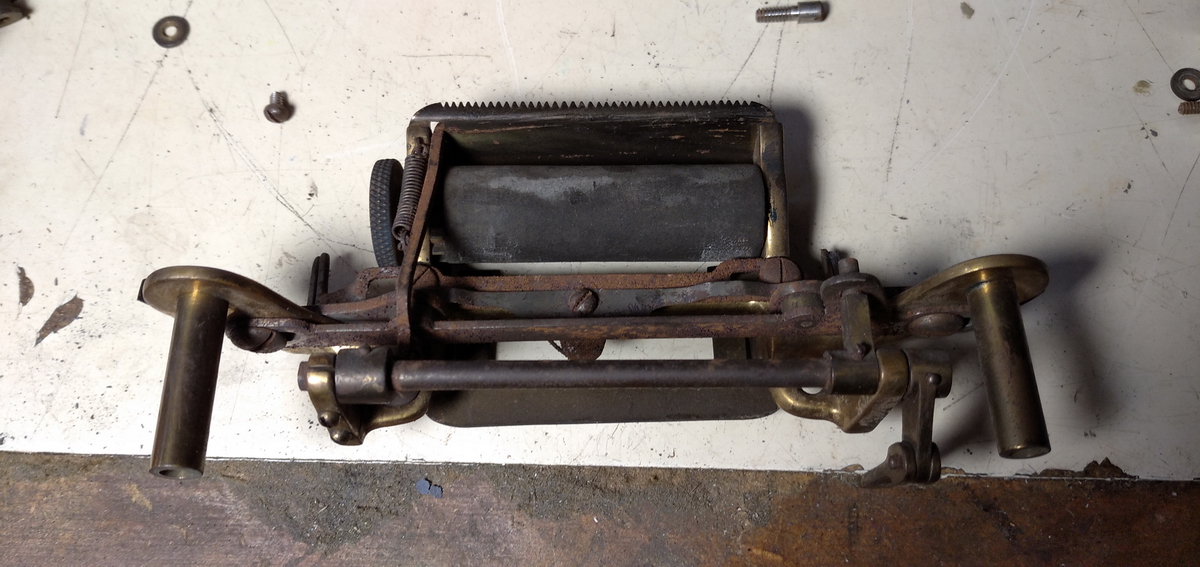
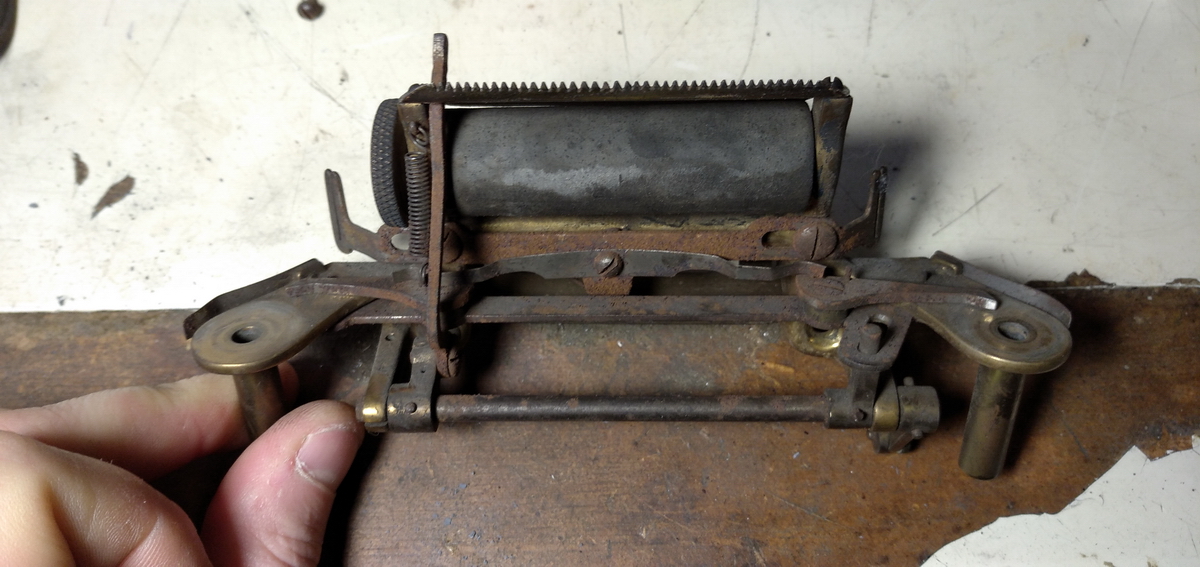
Disassembled, cleaned, reassembled:
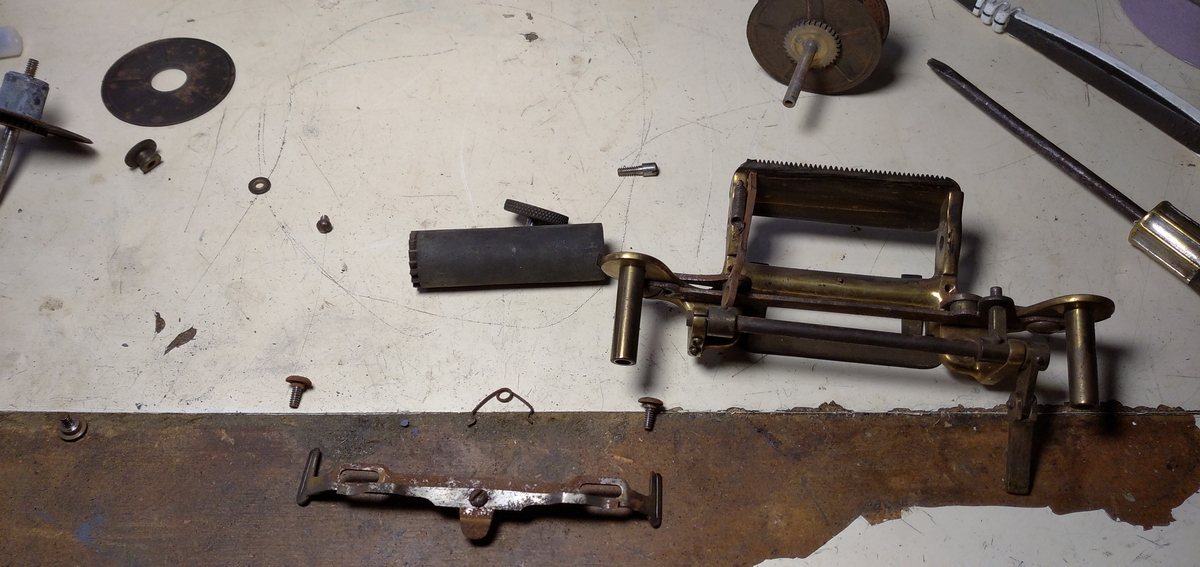
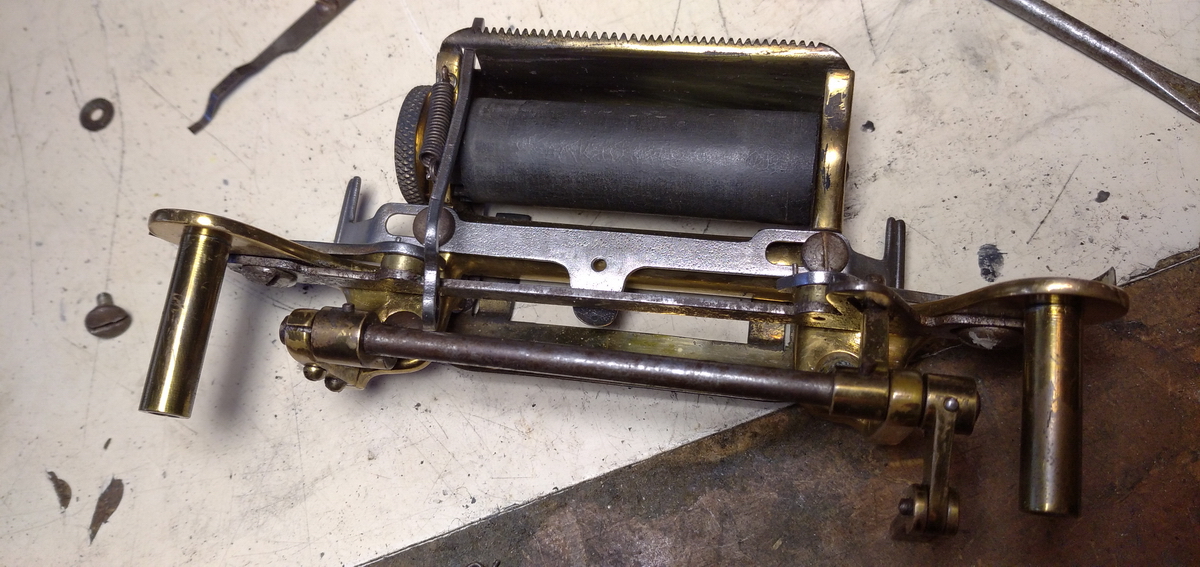
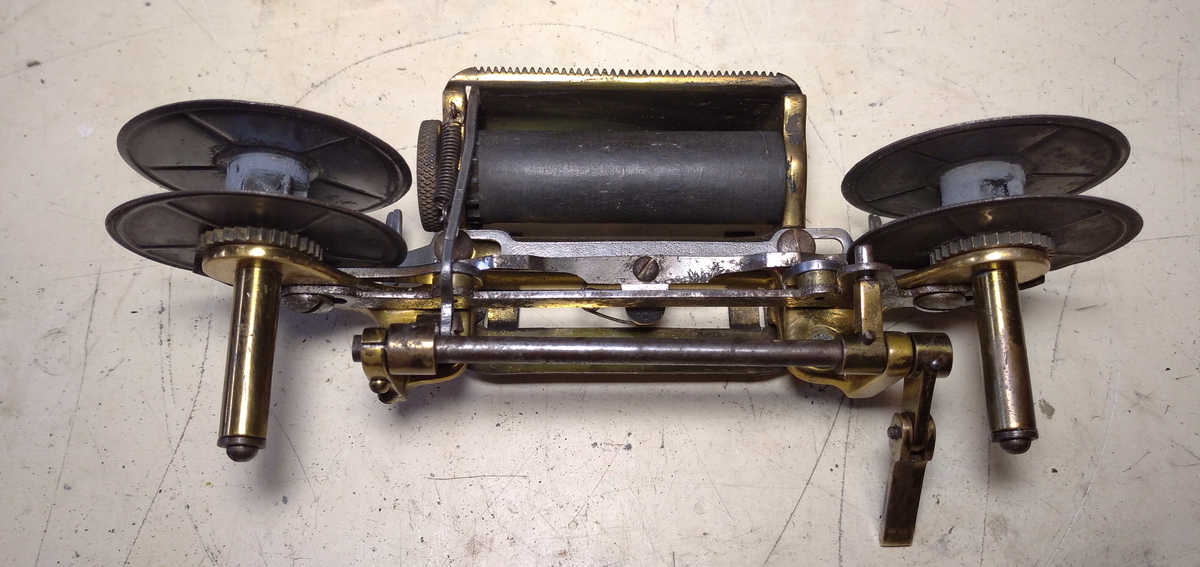
And finally some pictures of this now quite clean, but not very functional, see-through adding machine. Some buttons were cast and added in the missing places:
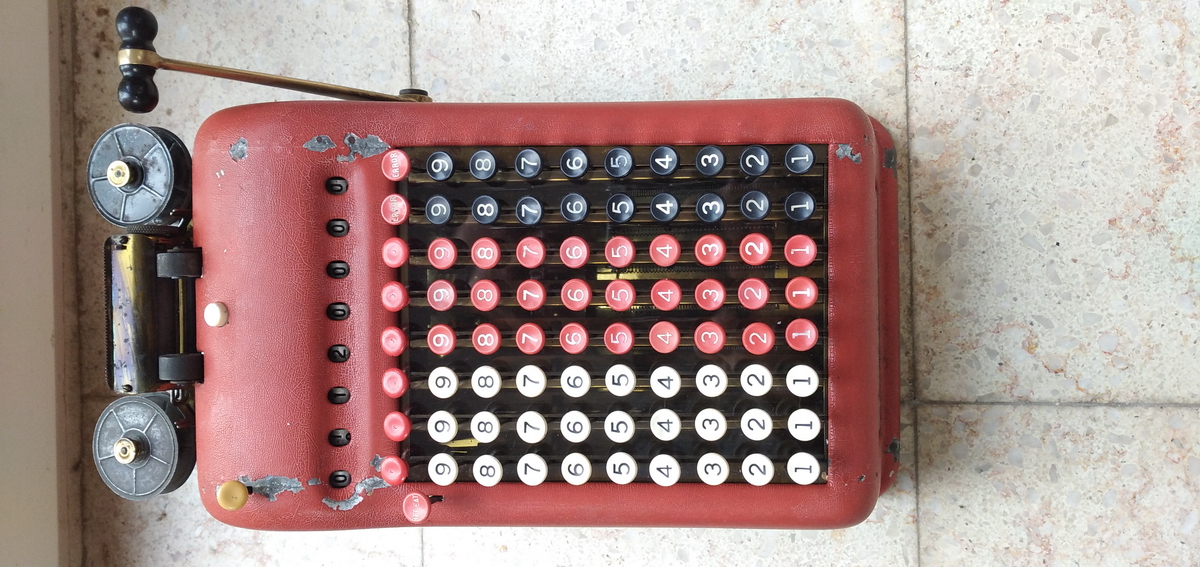
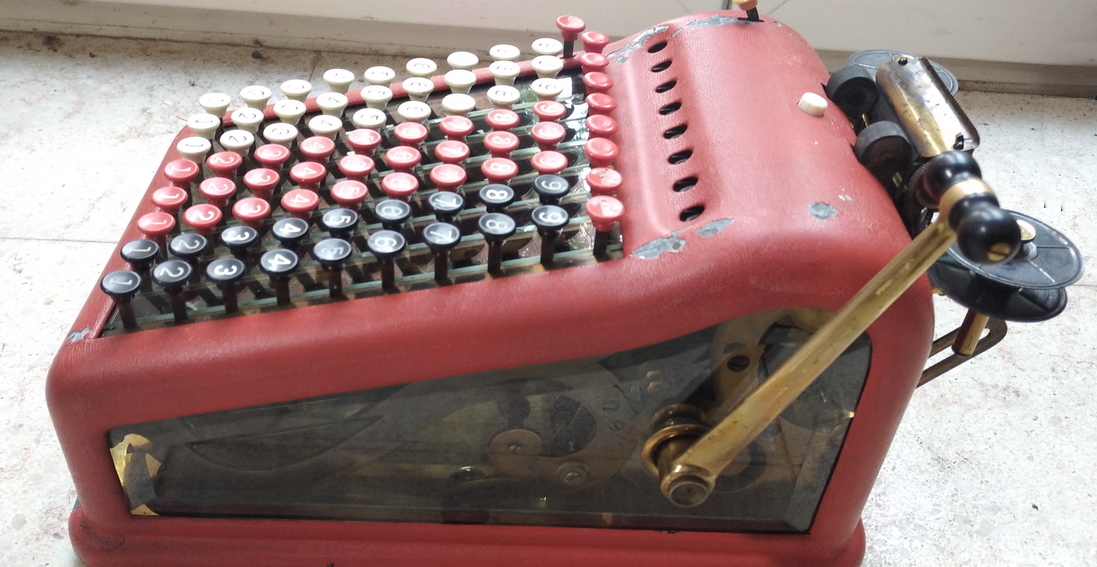
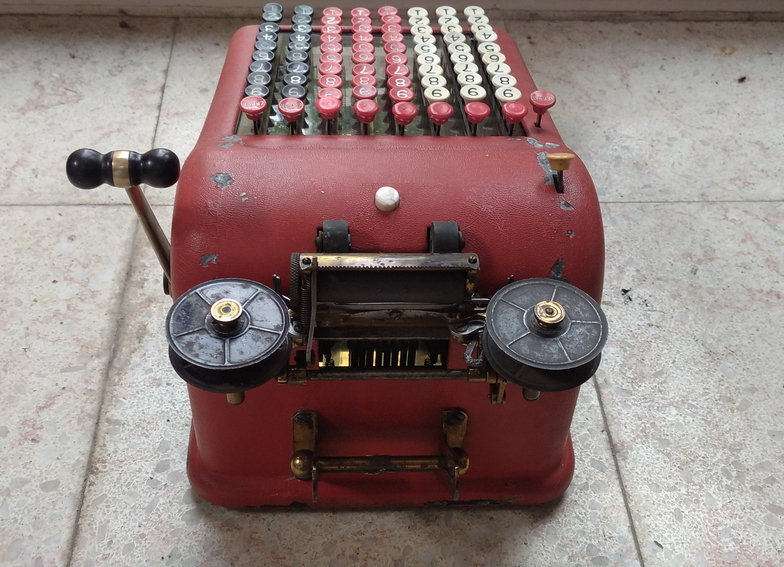
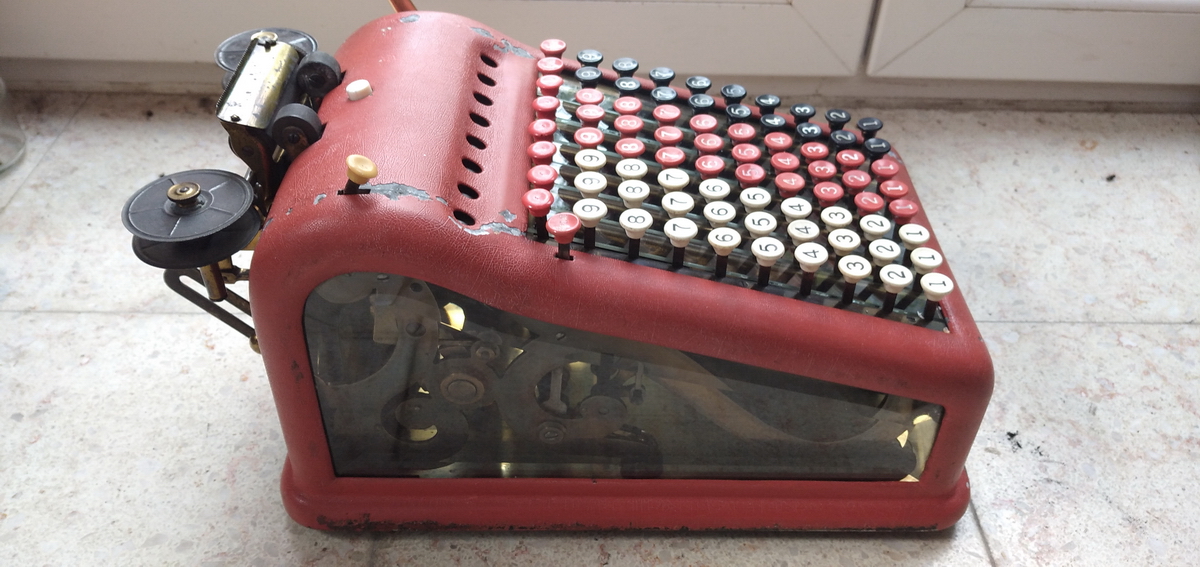
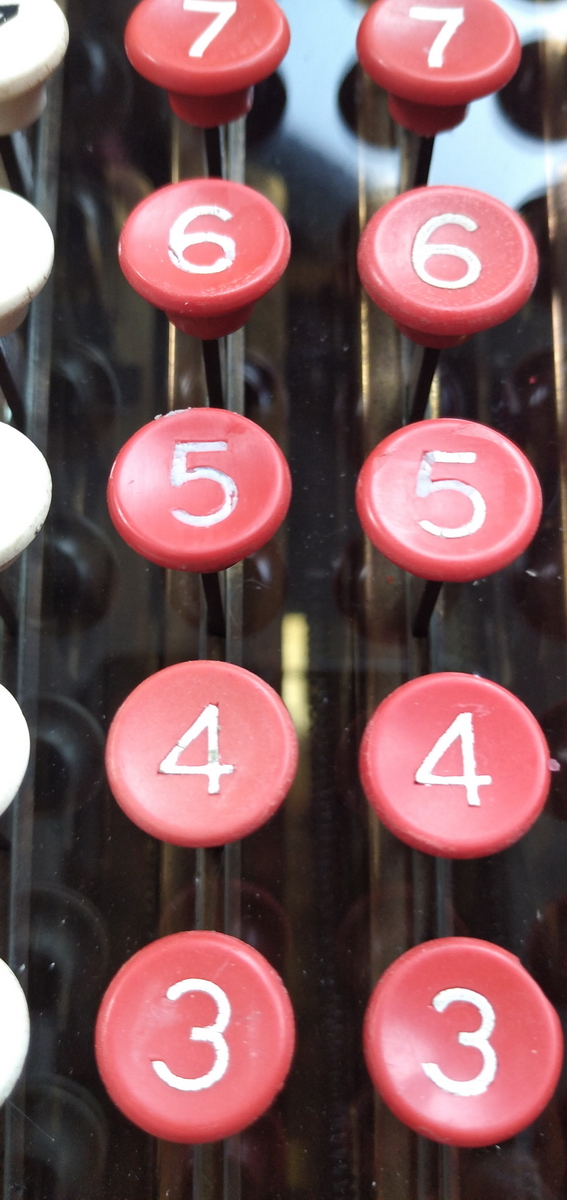
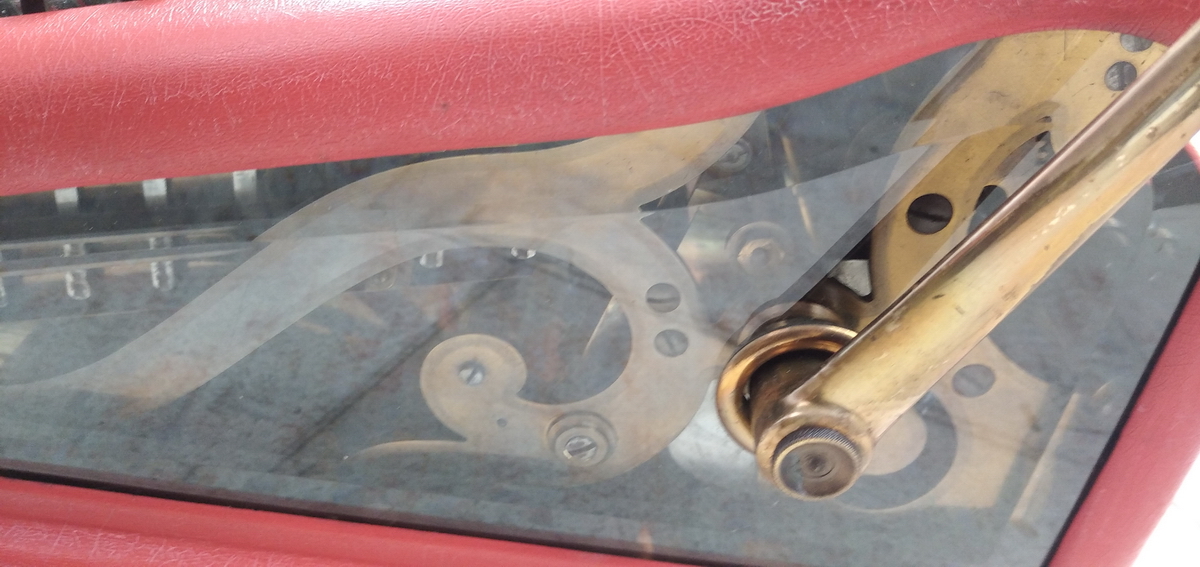
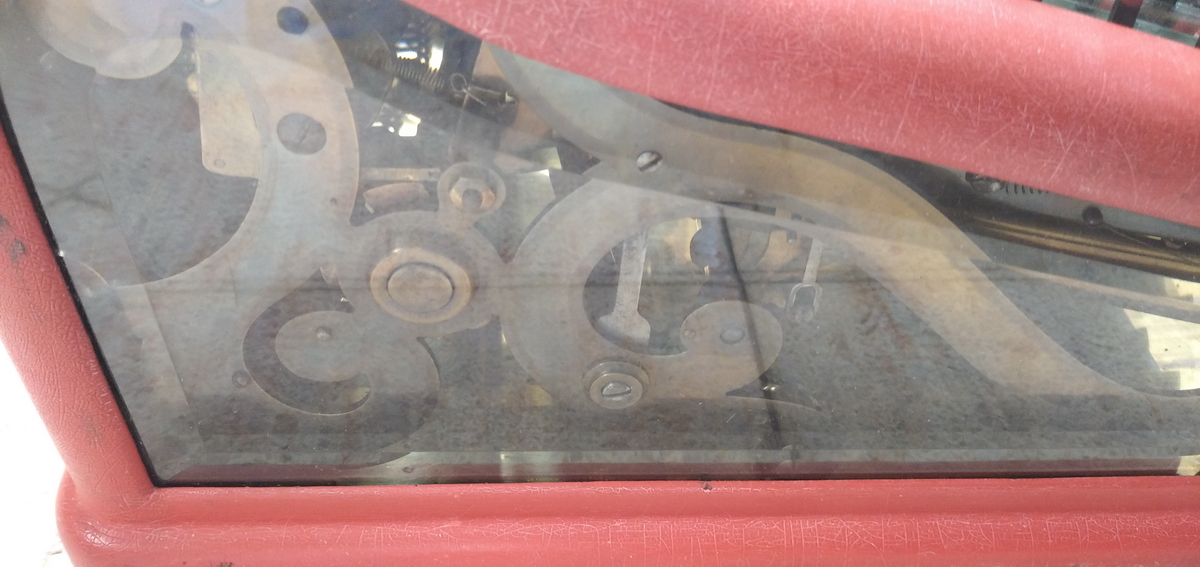
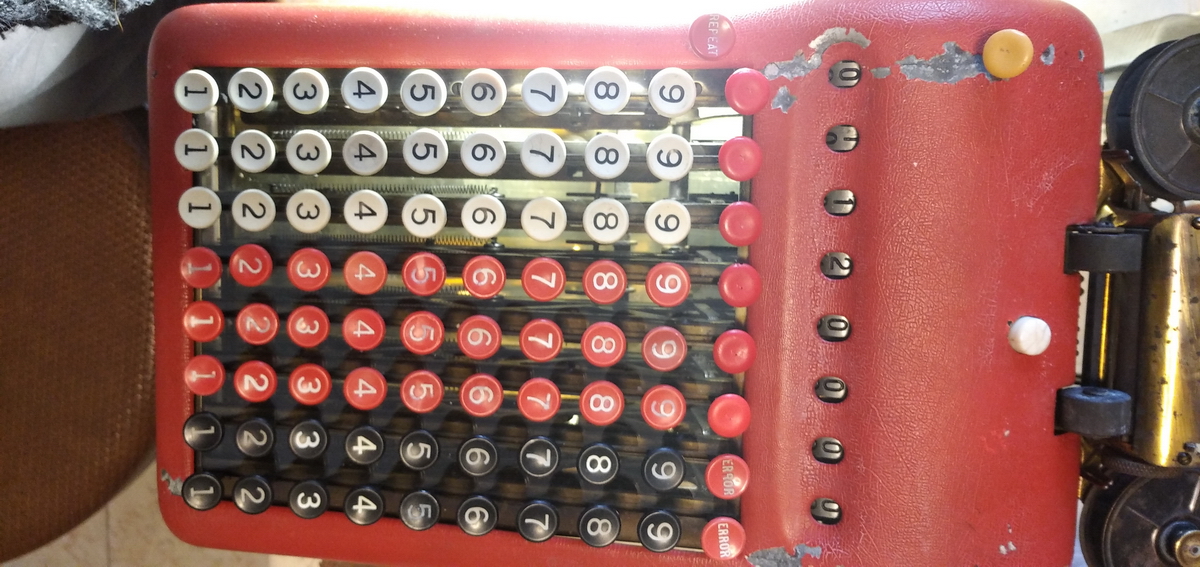
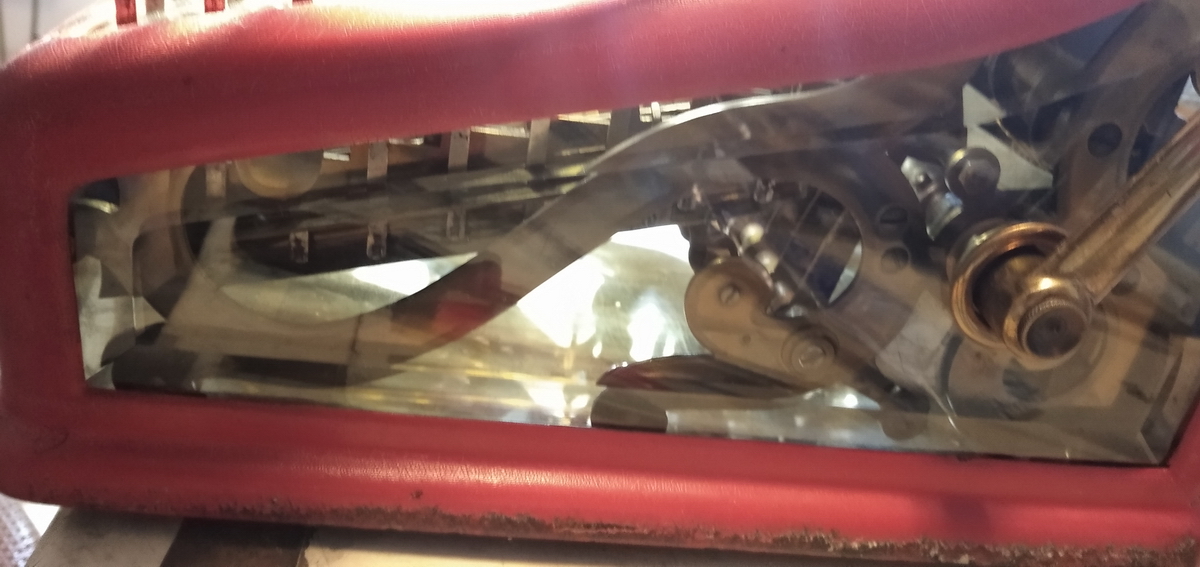
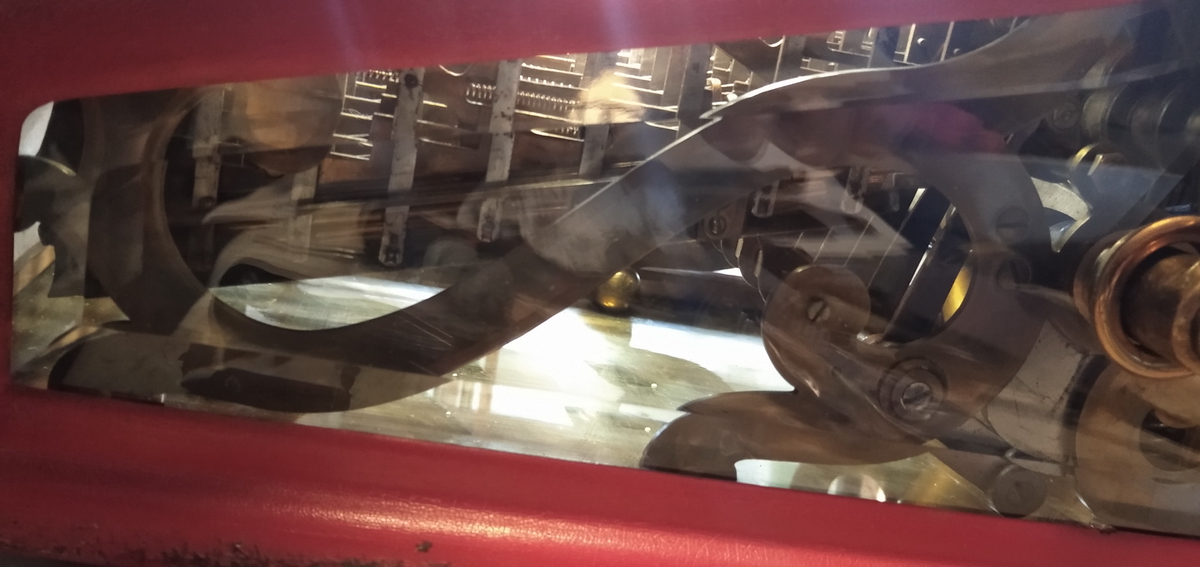
And just to be sure, at least the result register clears to zero ...
